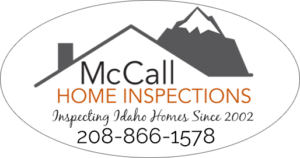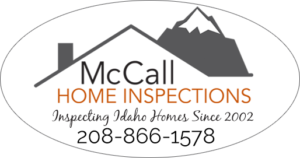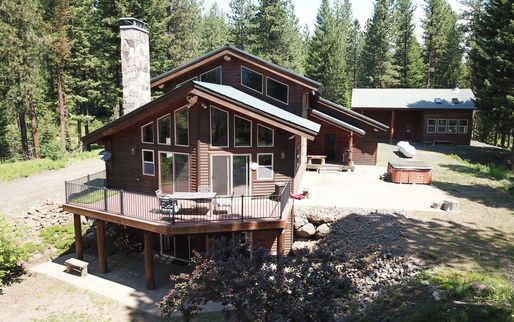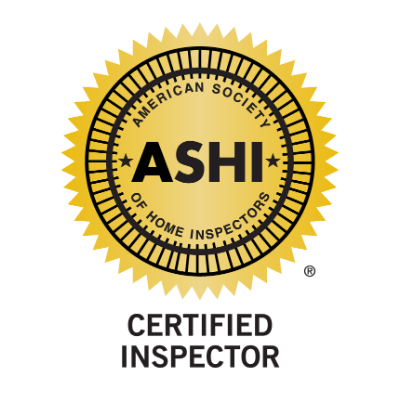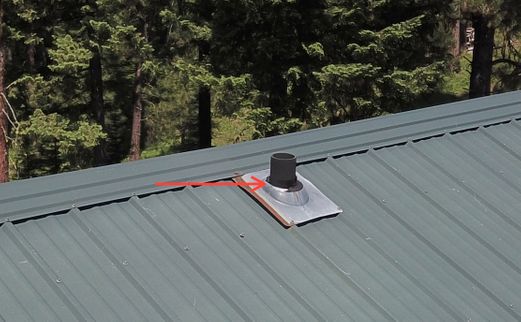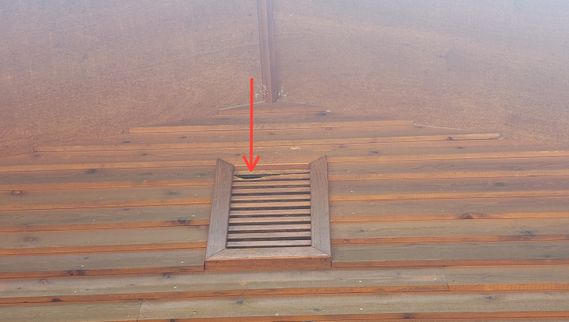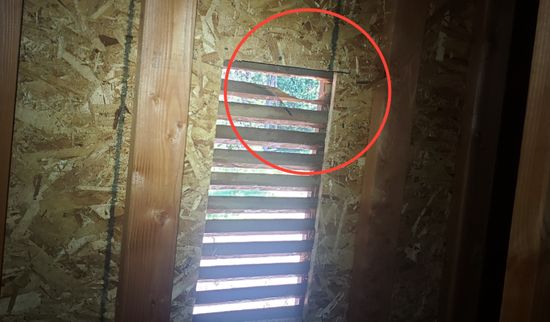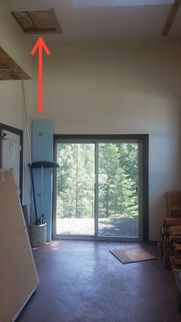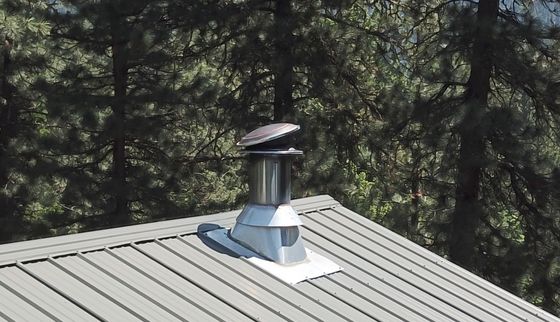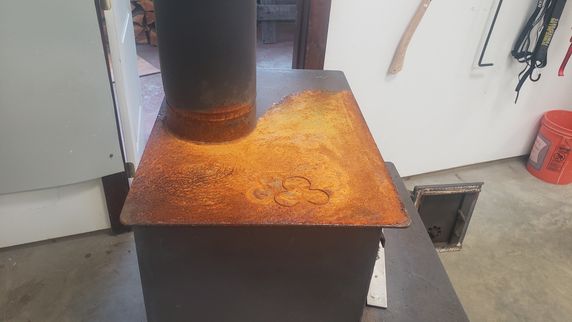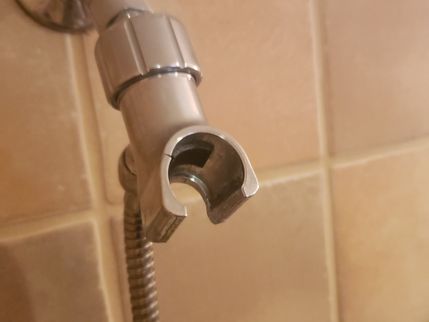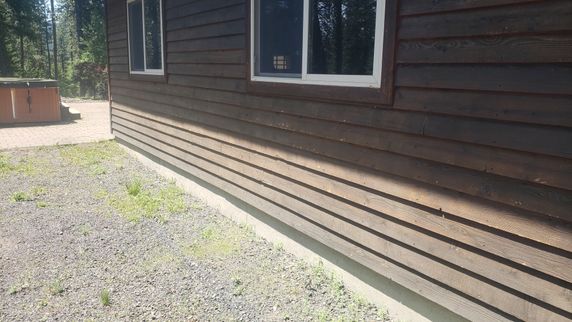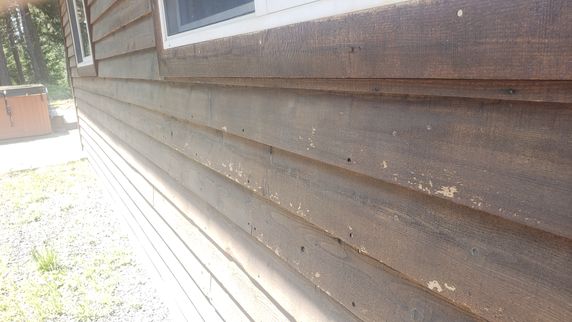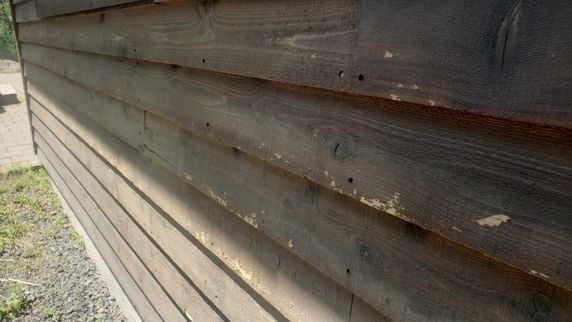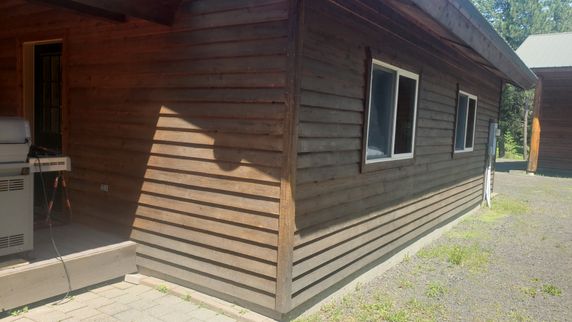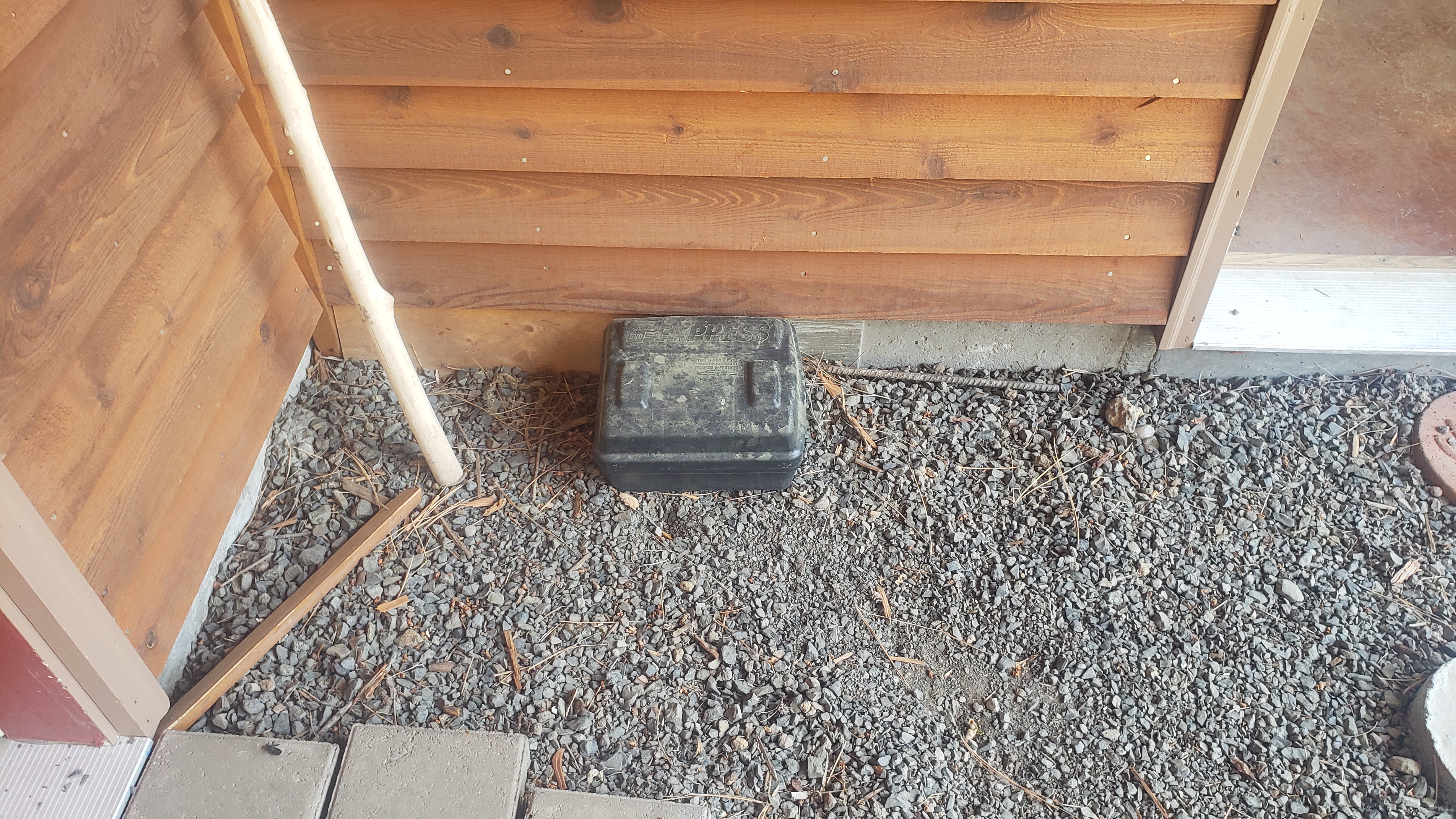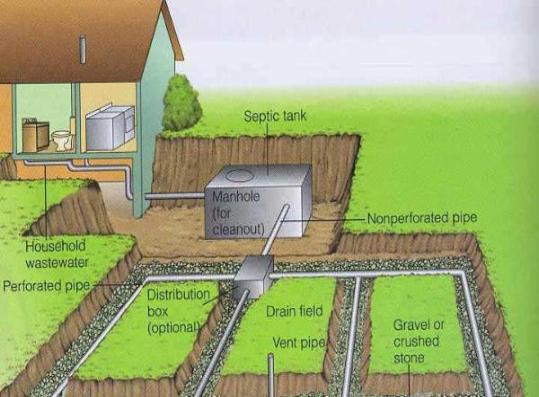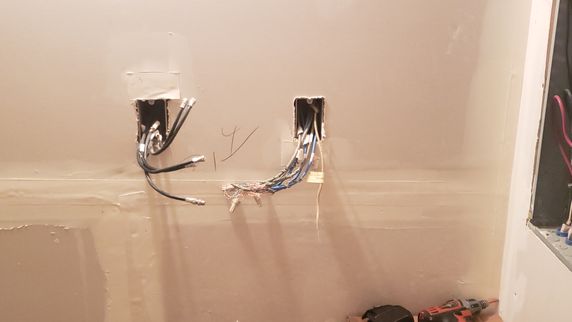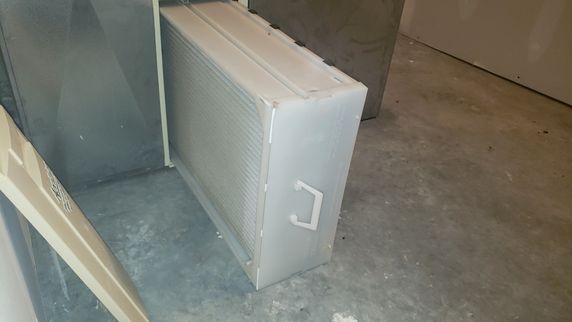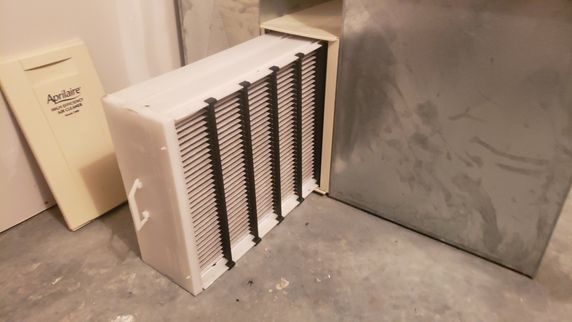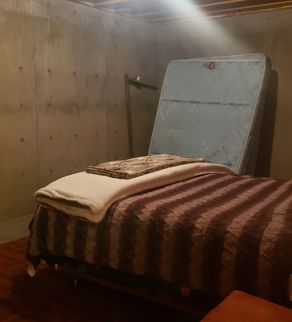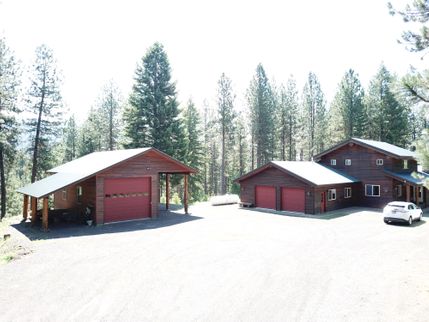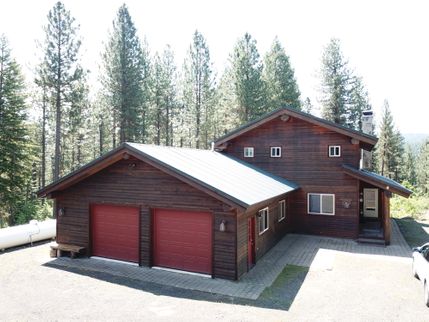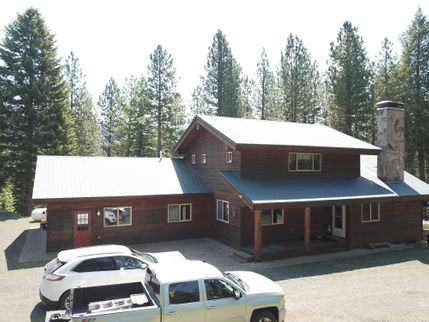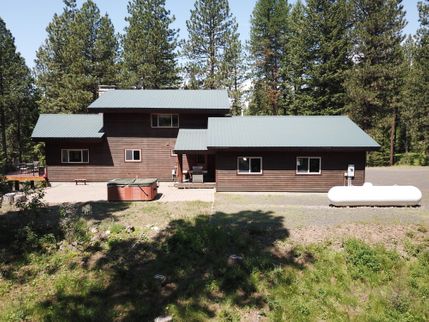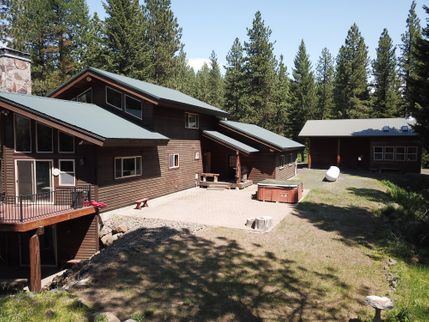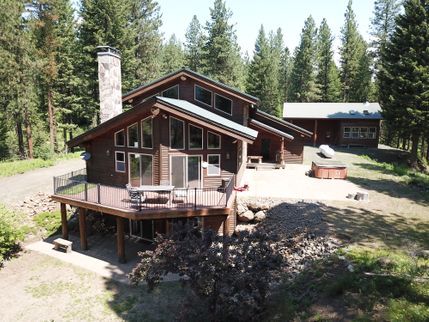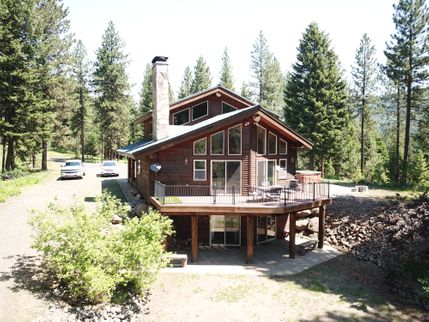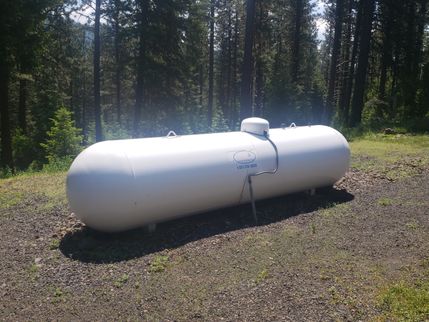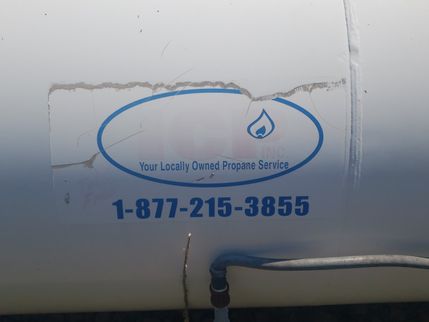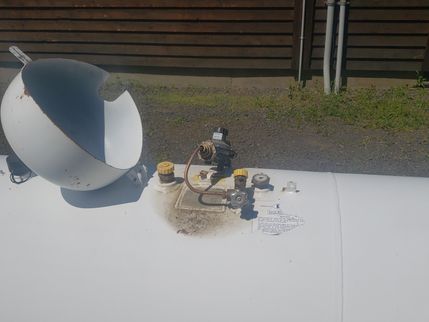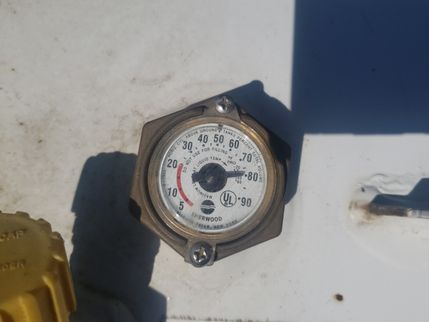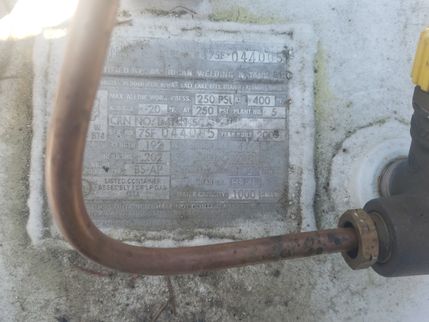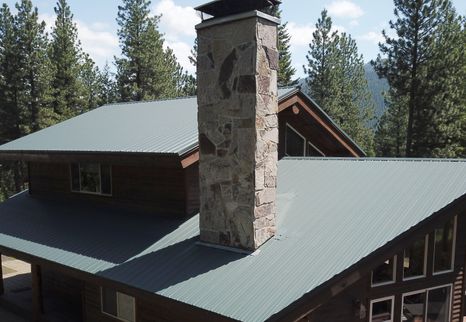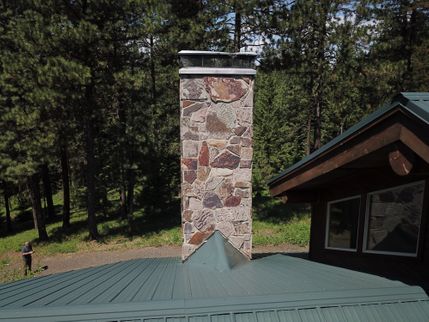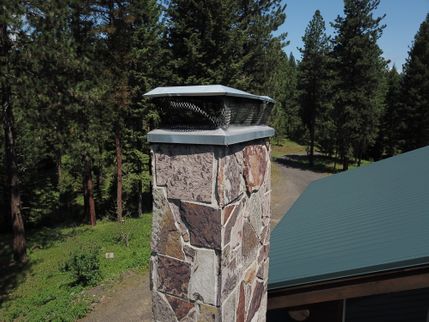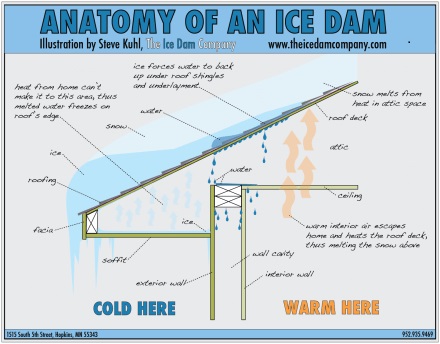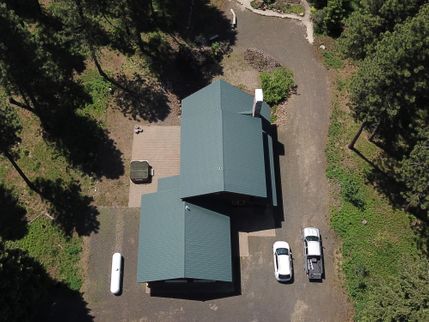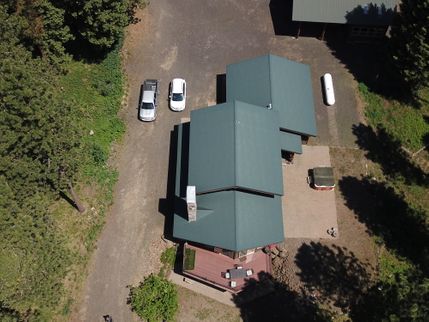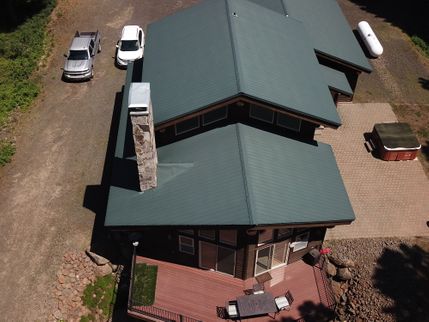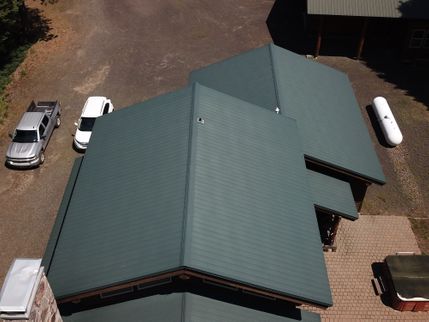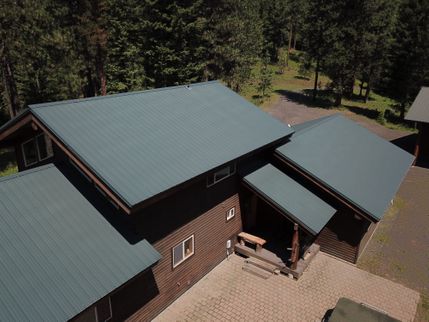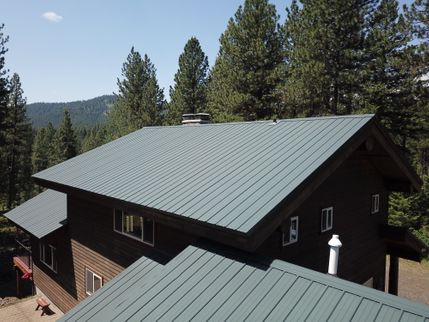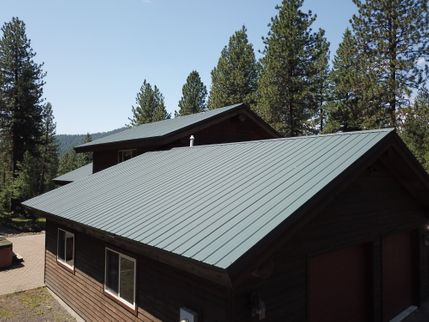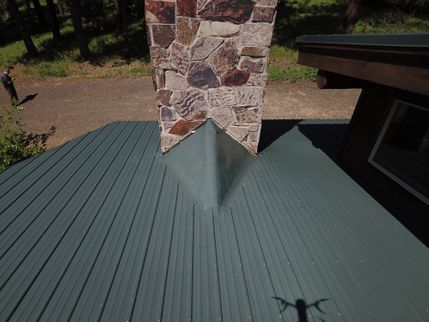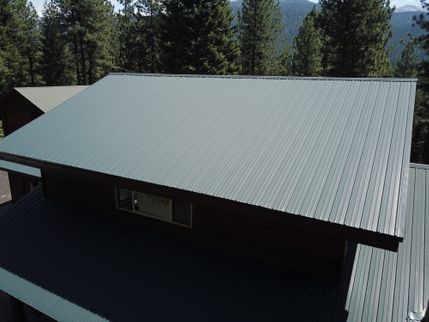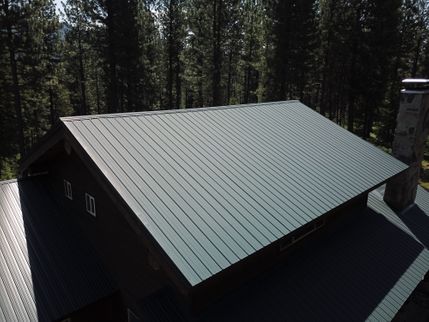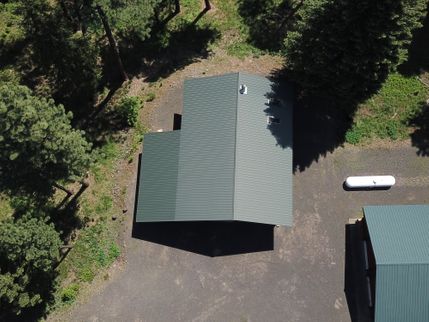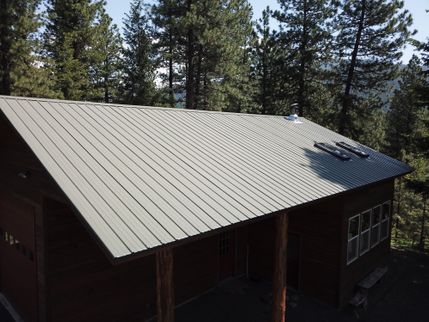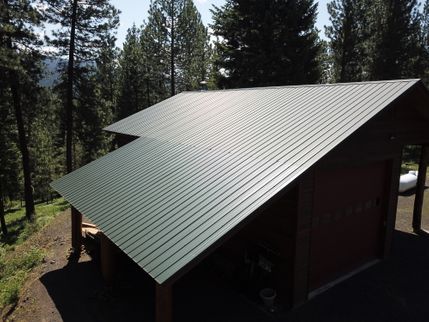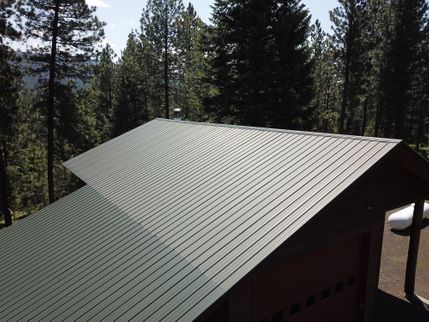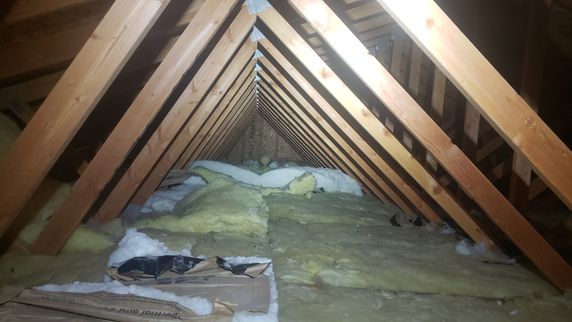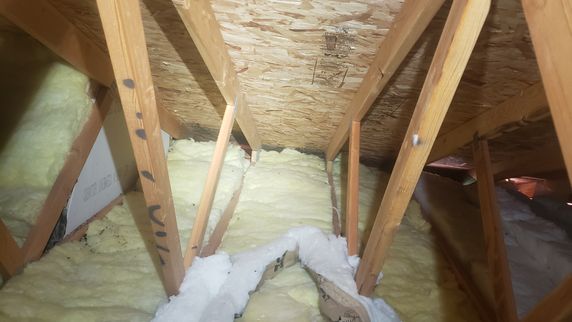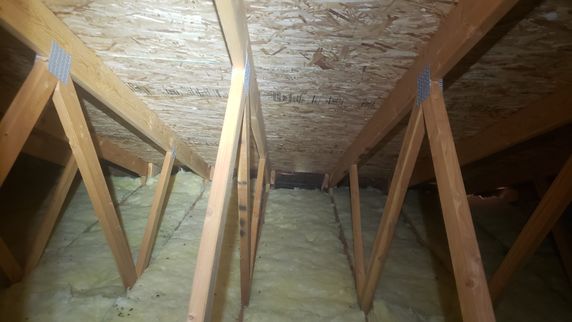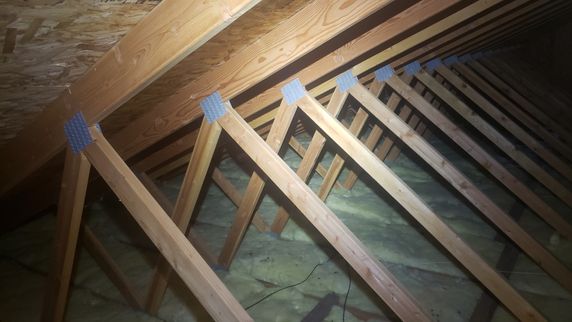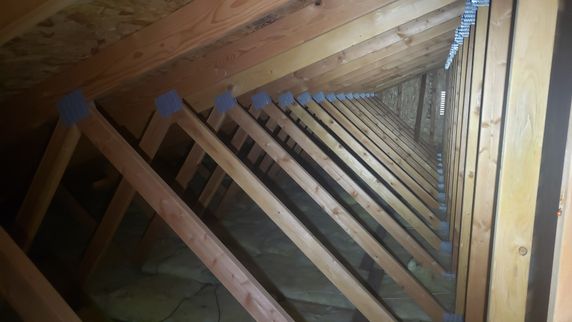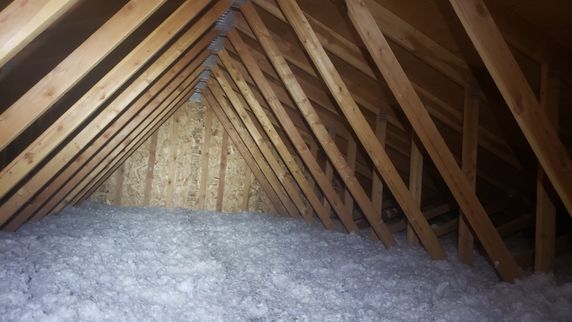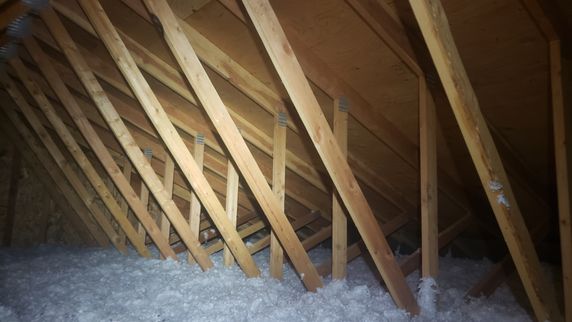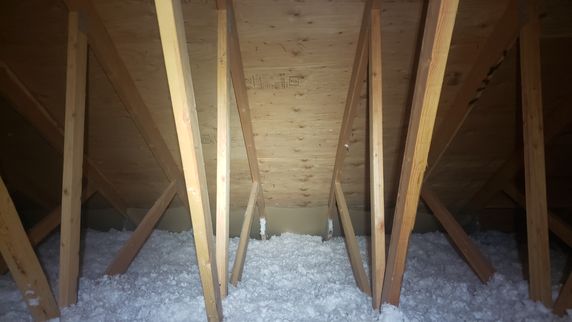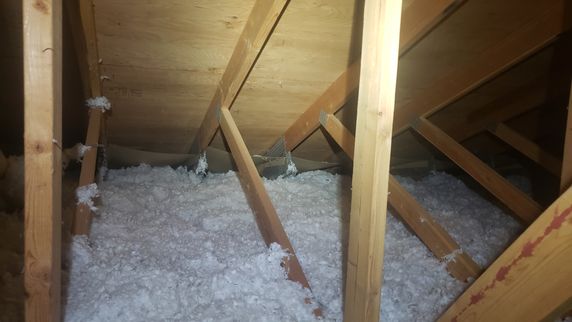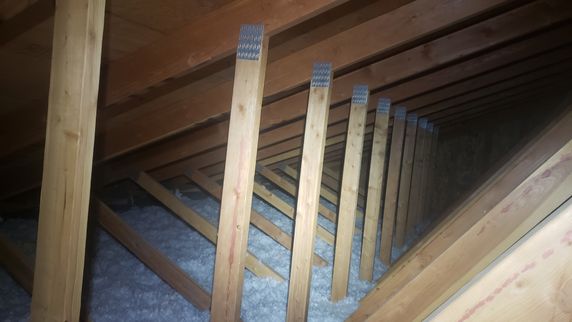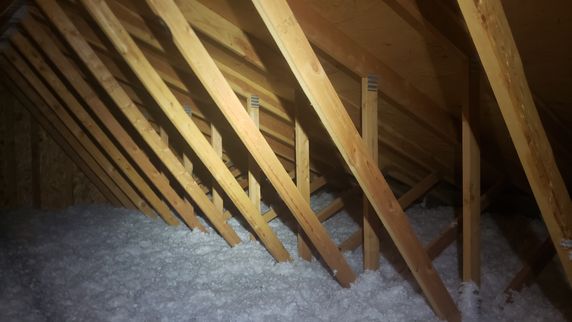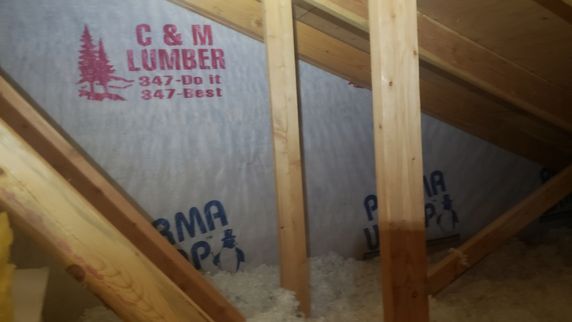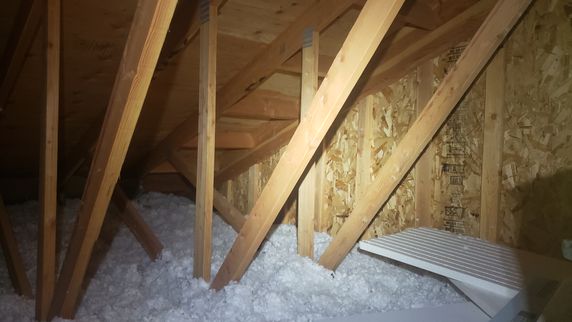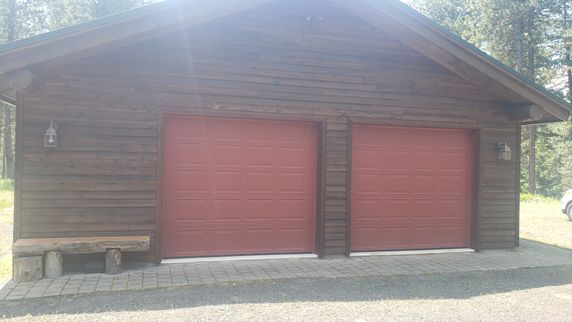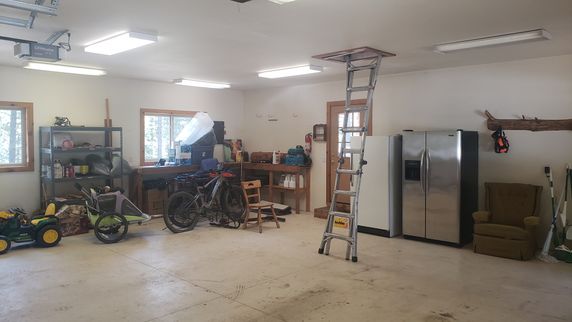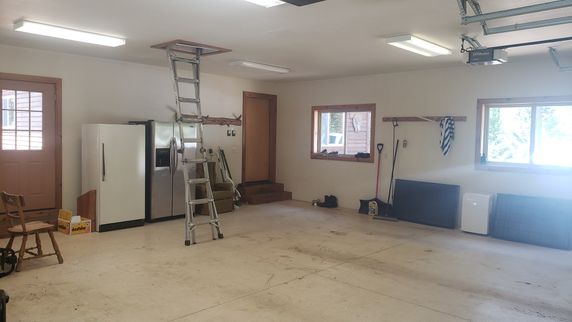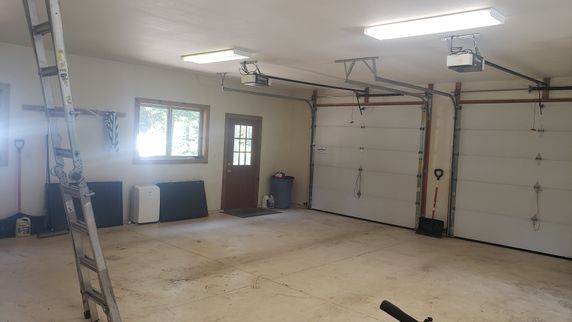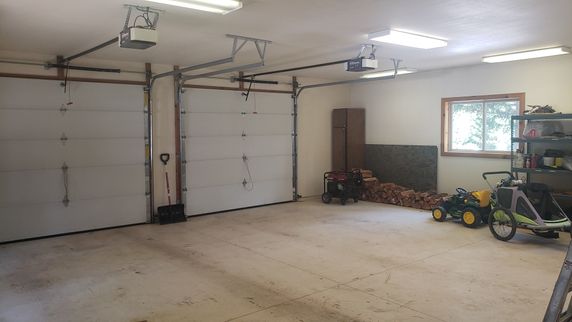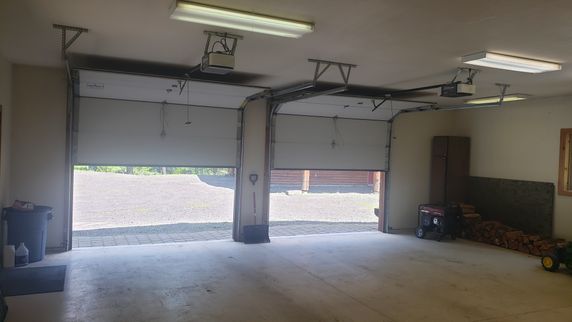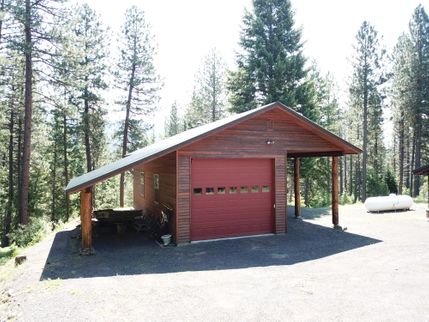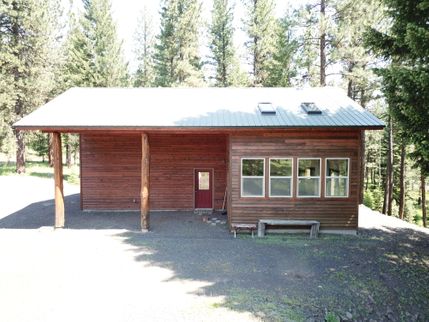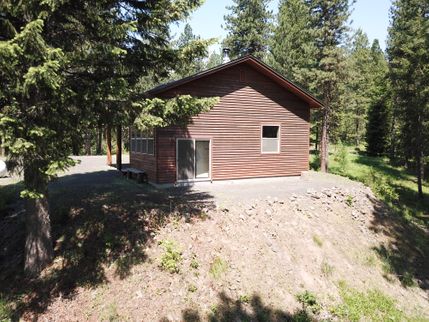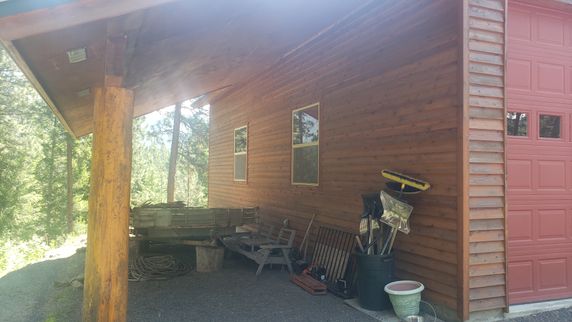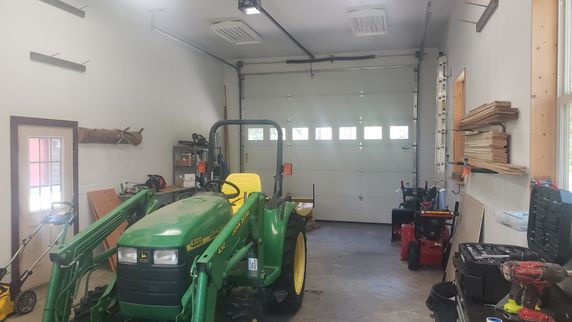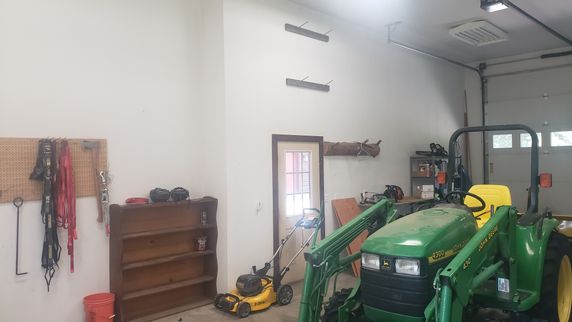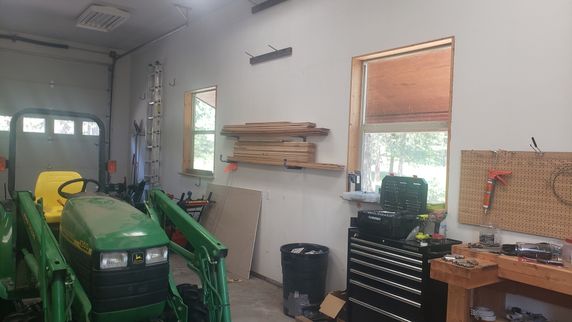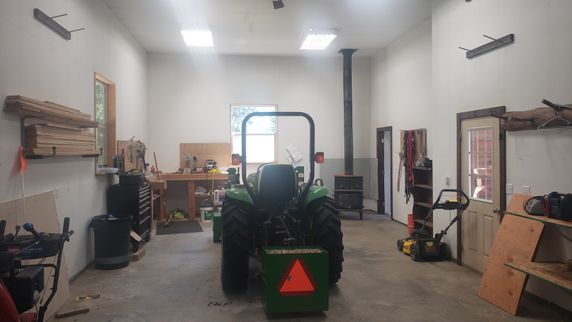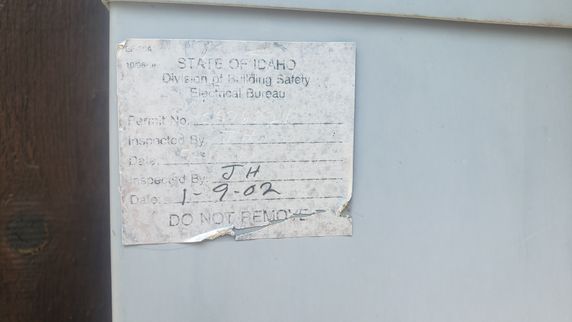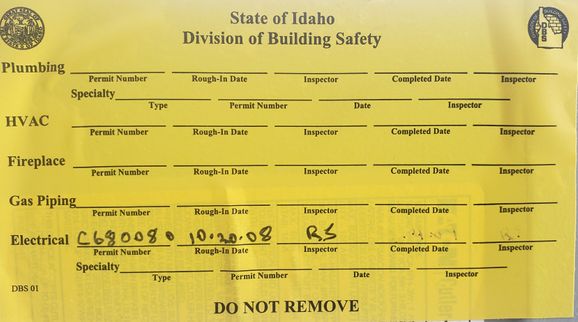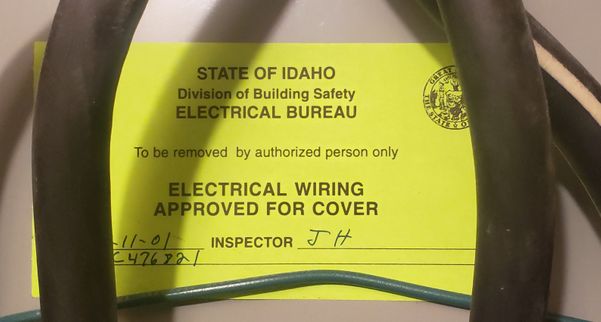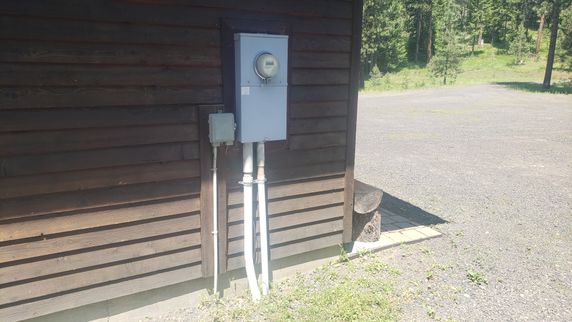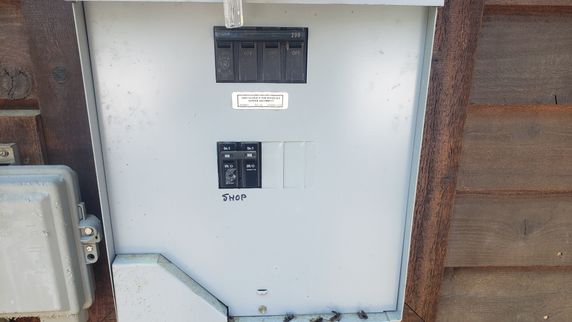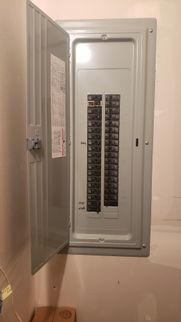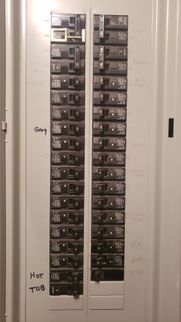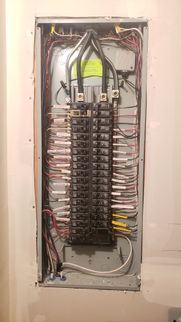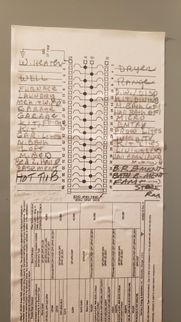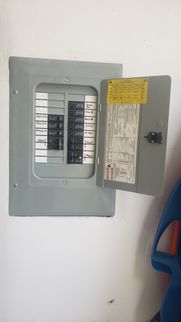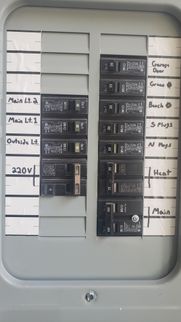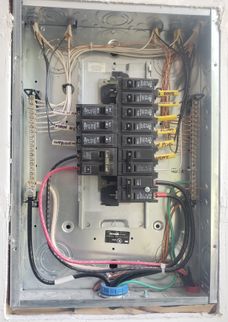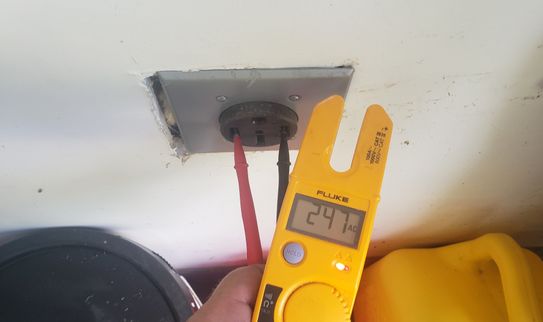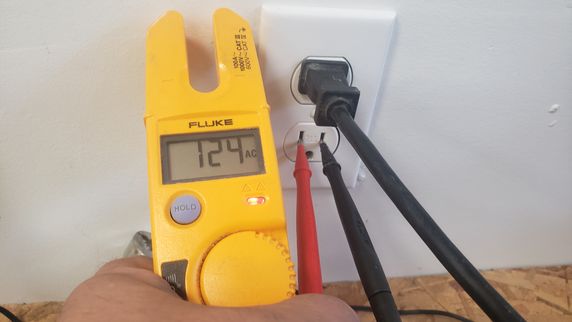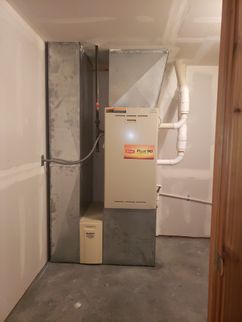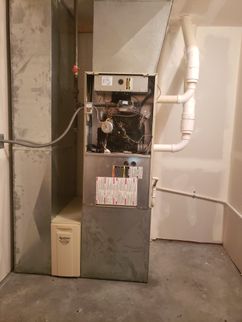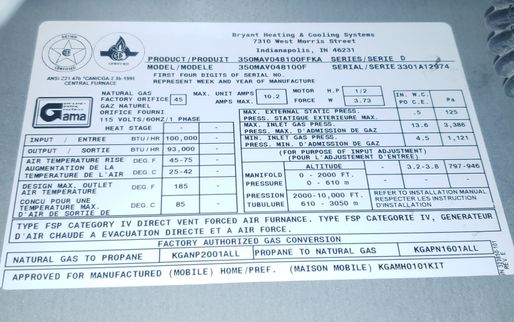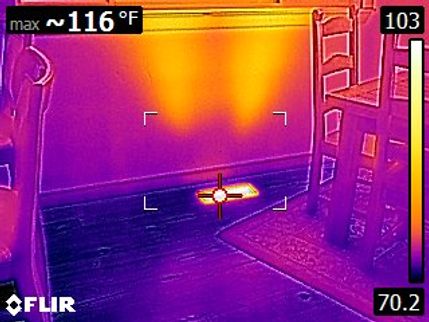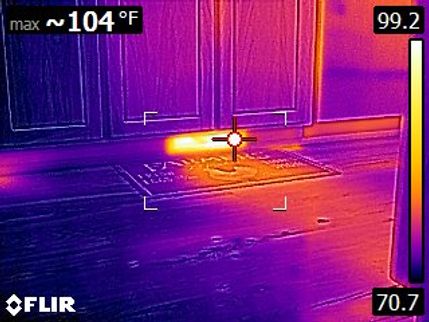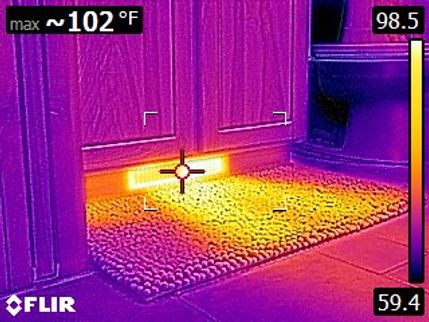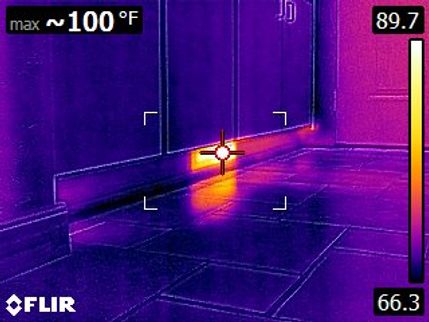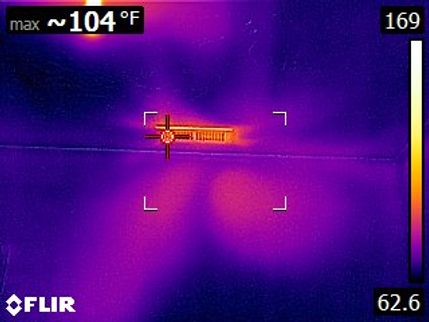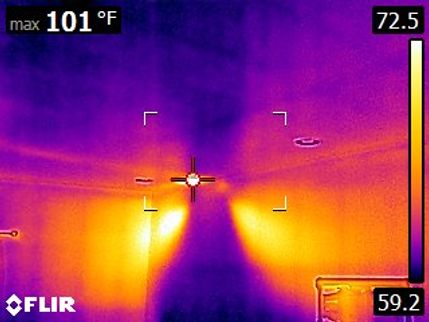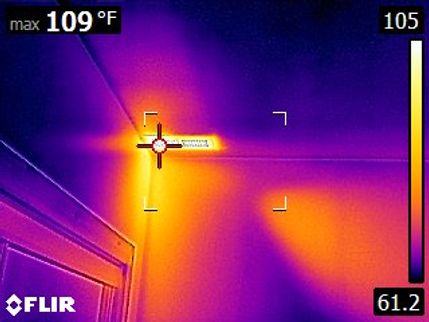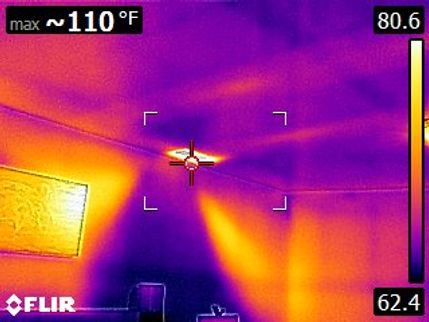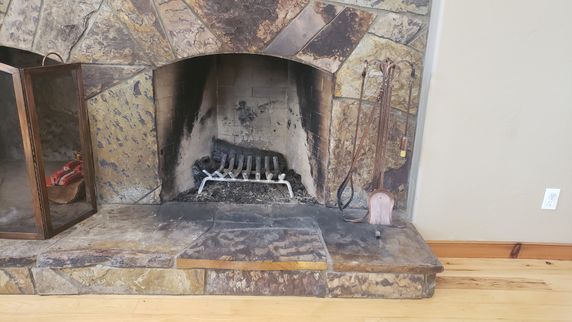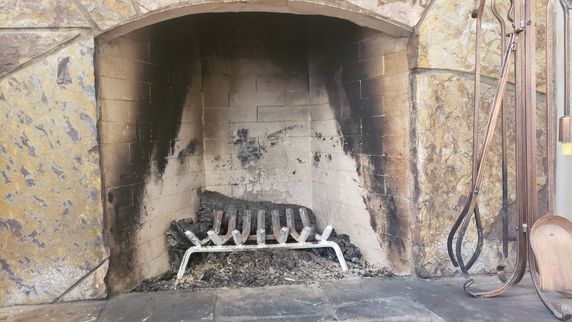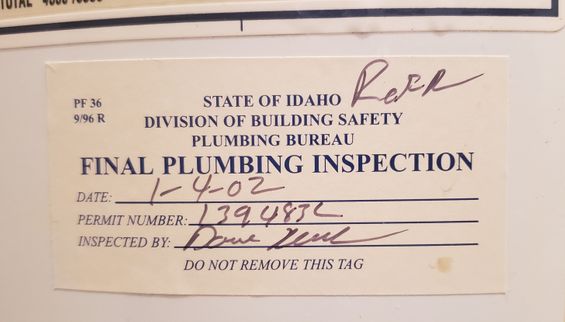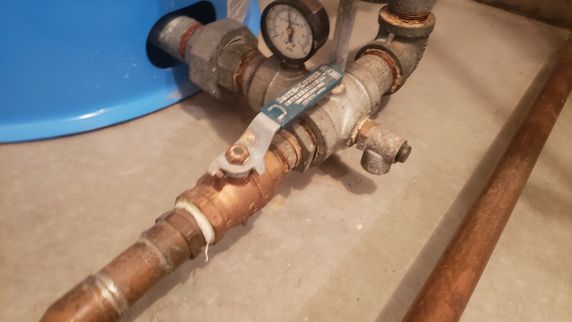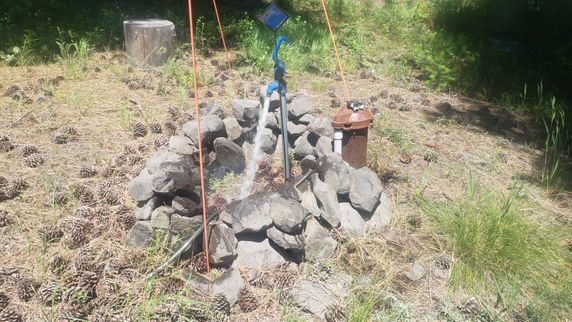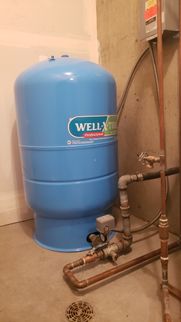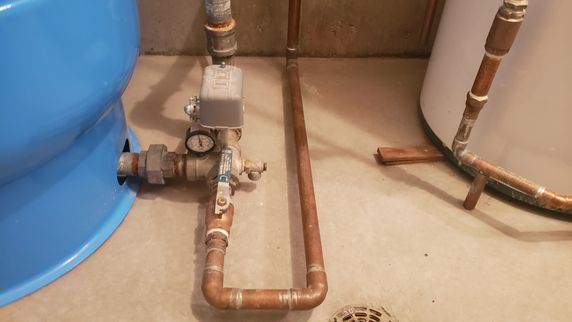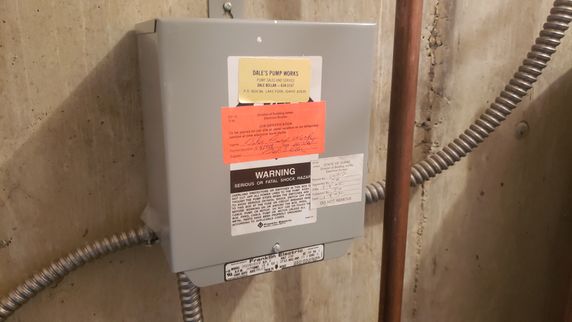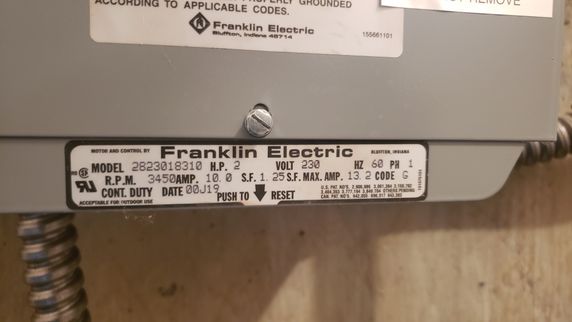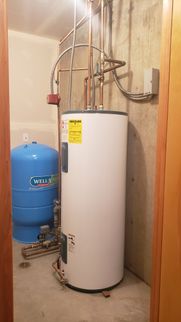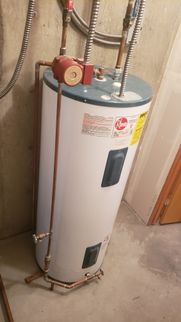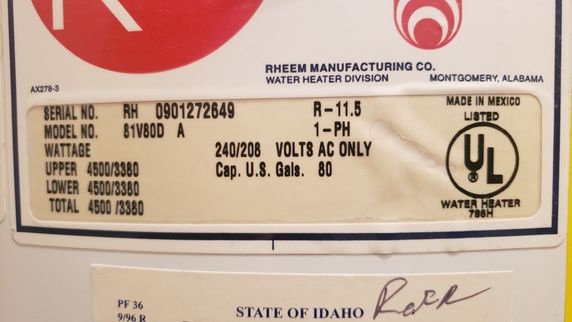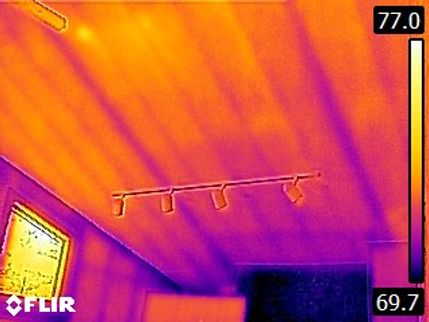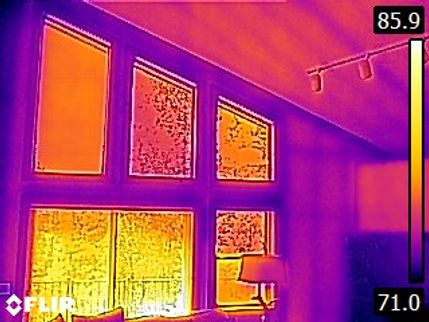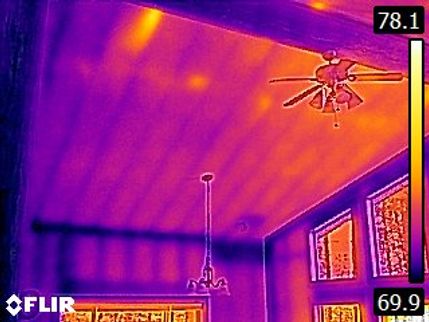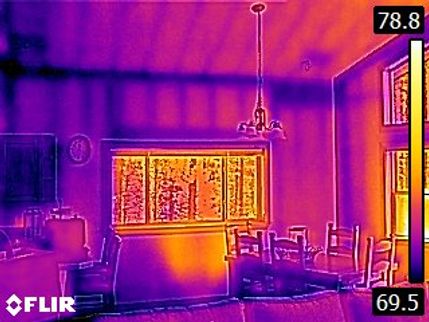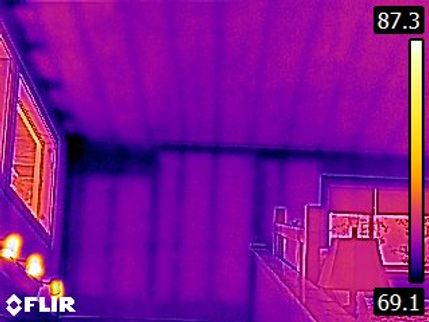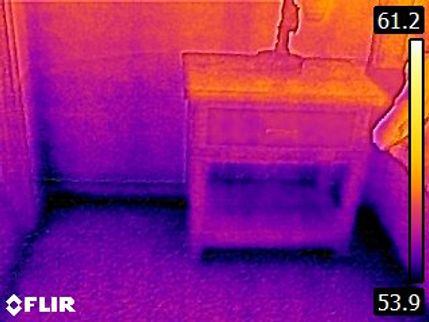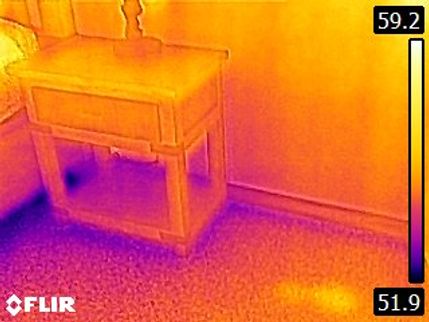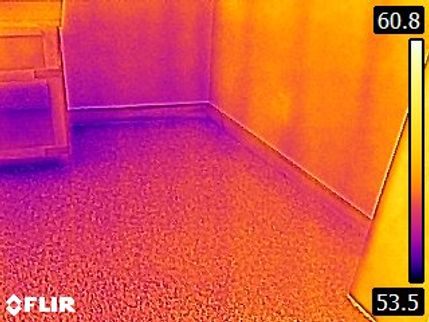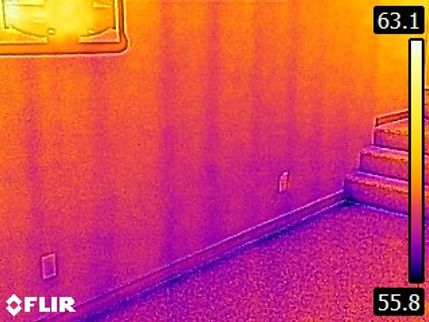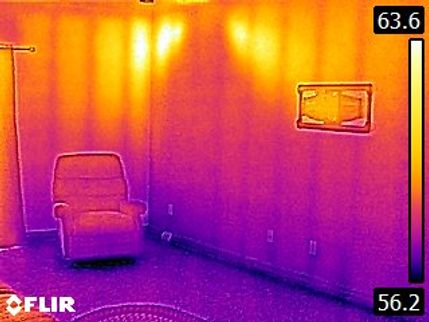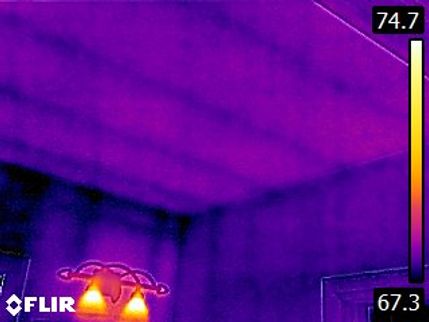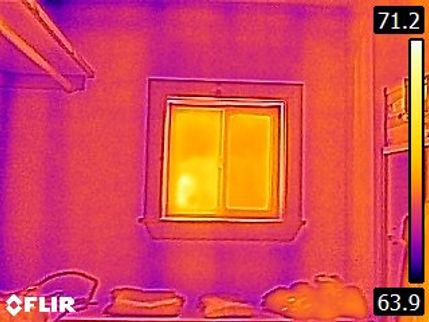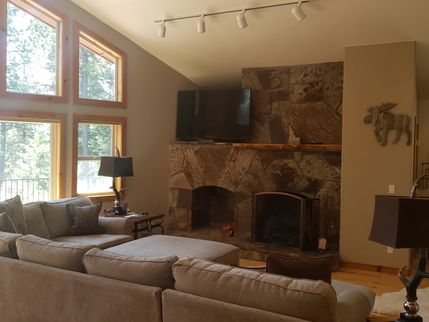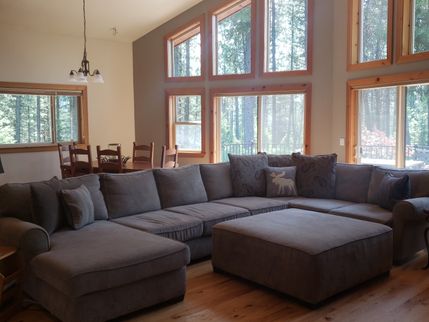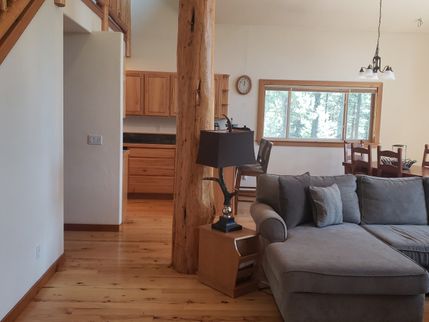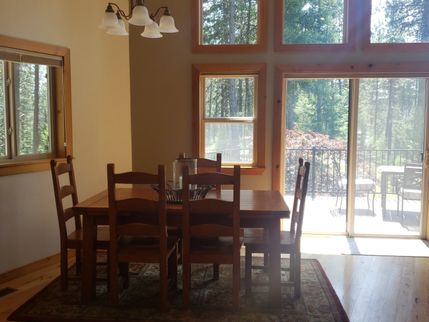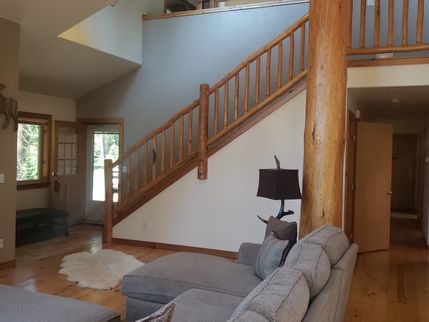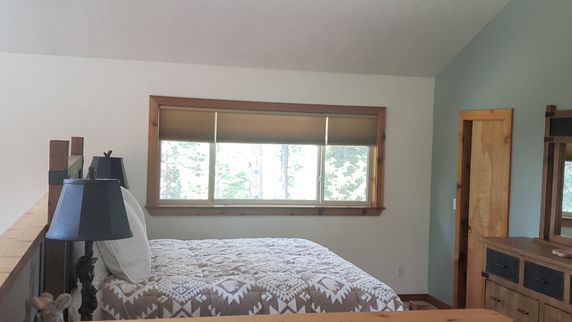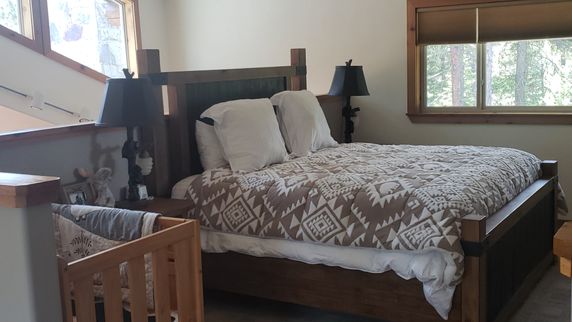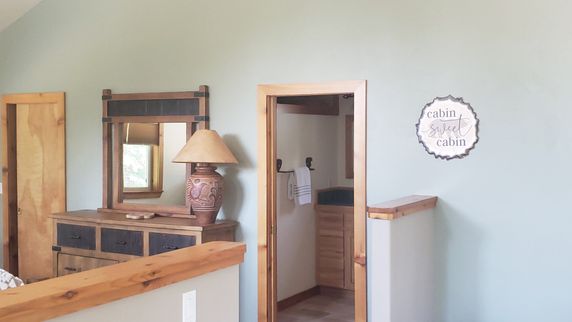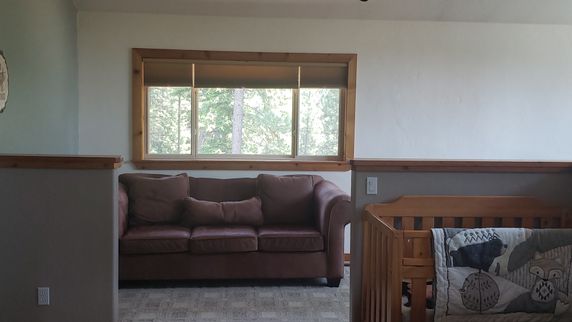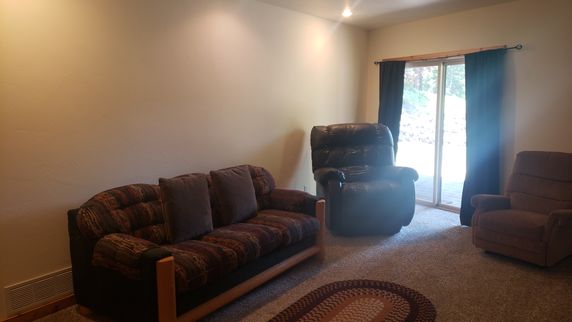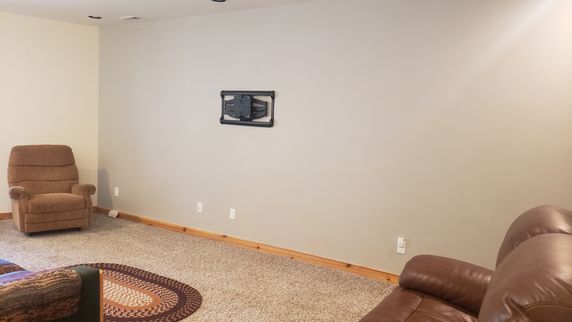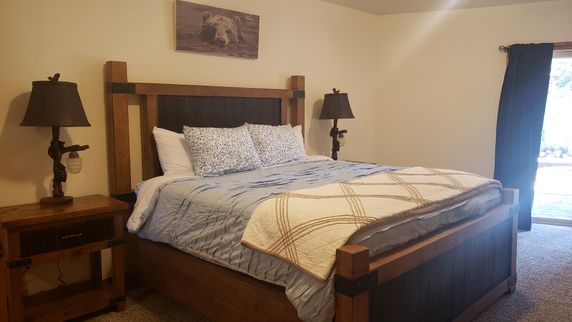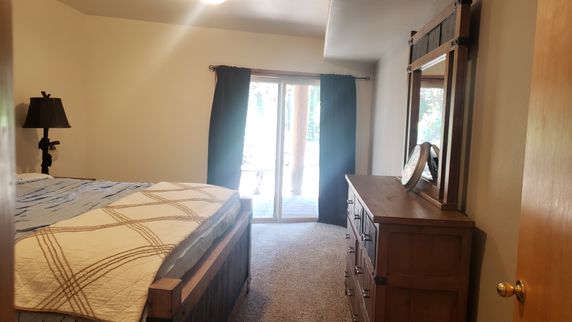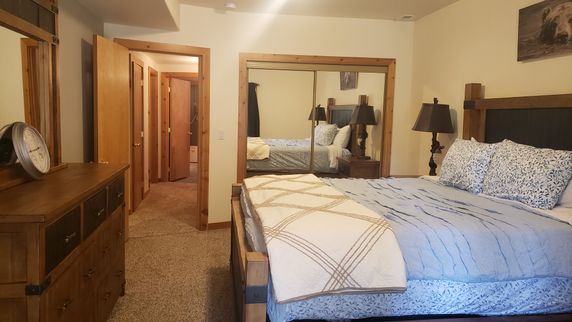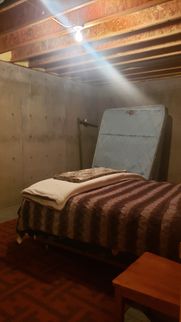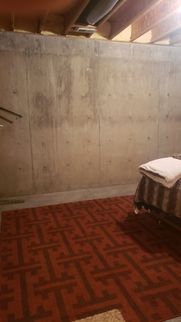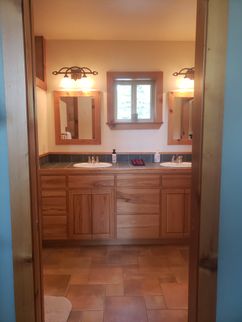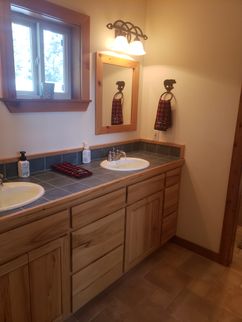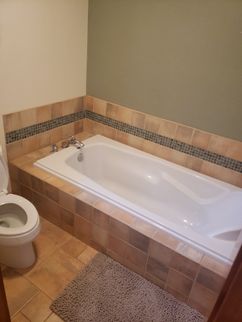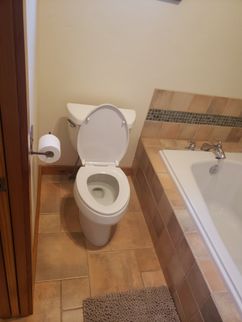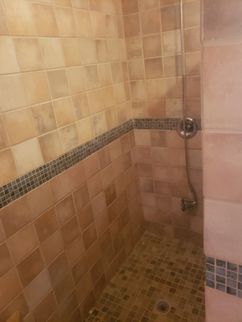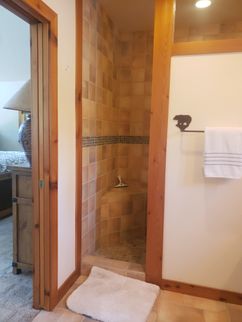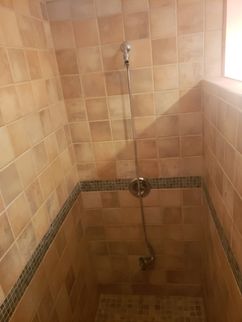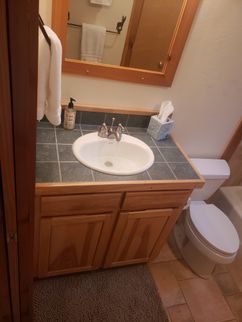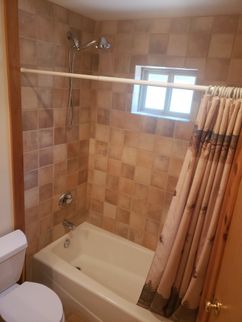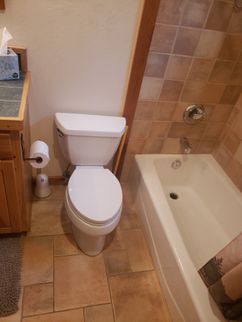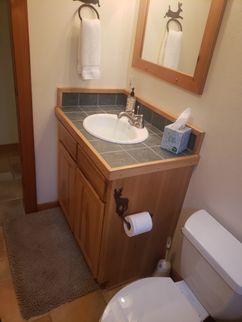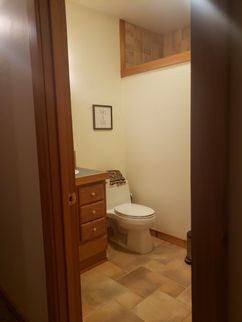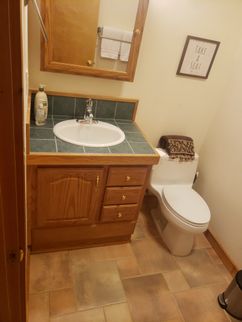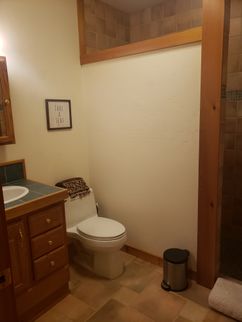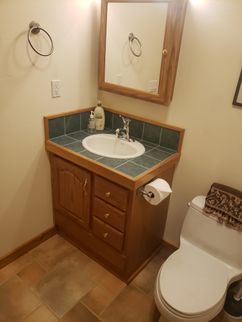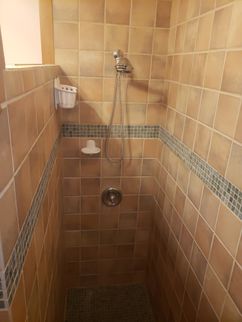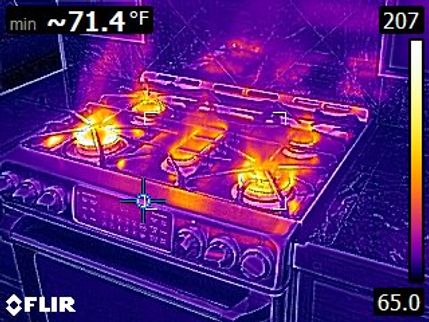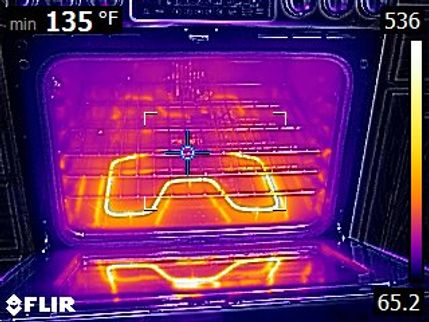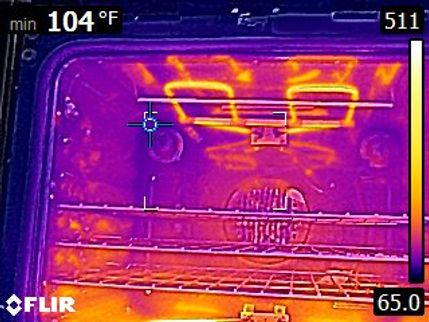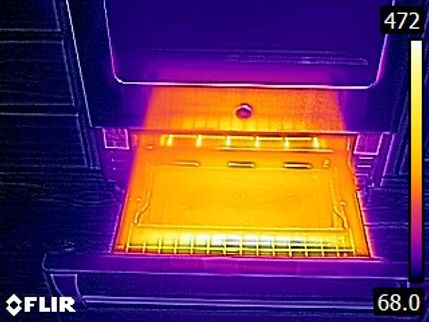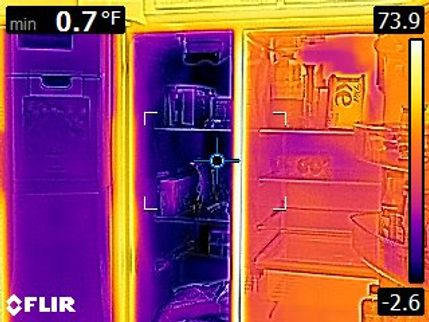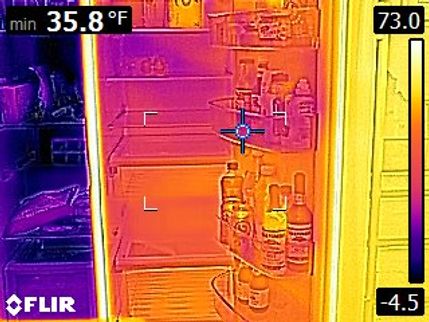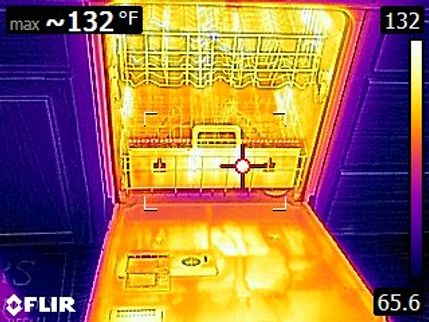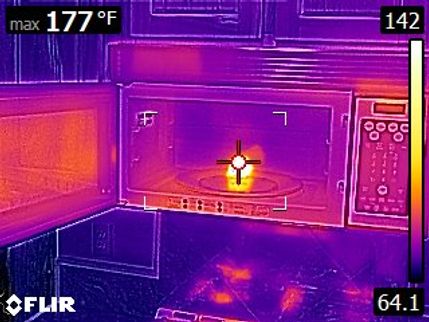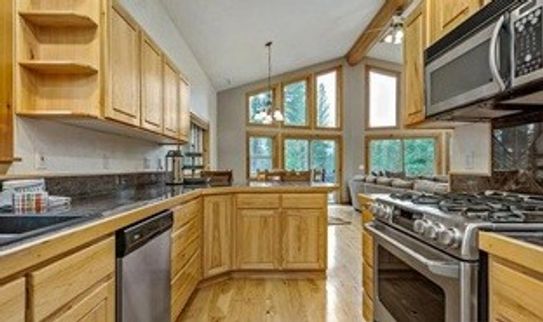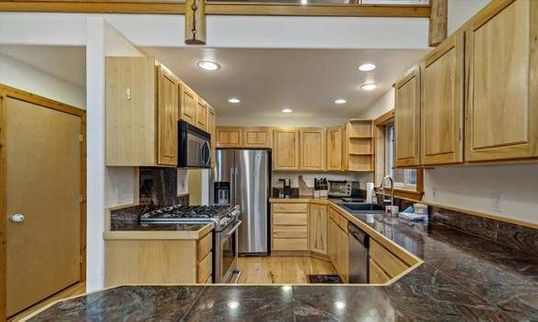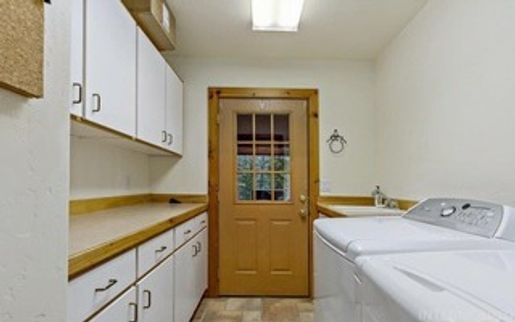
McCall Home Inspections - Matthew Merlino, License #ASHI Certified Inspector #244711
The Scope and Purpose of a Home Inspection
Purchasing property involves risk
The purpose of a home inspection is to help reduce the risk associated with the purchase of a structure by providing a professional opinion about the overall condition of the structure. A home inspection is a limited visual inspection and it cannot eliminate this risk. Some homes present more risks than others. We cannot control this, but we try to help educate you about what we don’t know during the inspection process. This is more difficult to convey in a report and one of many reasons why we recommend that you attend the inspection.
A home inspection is not an insurance policy
This report does not substitute for or serve as a warranty or guarantee of any kind. Home warranties can be purchased separately from insuring firms that provide this service.
A home inspection is visual and not destructive
The descriptions and observations in this report are based on a visual inspection of the structure. We inspect the aspects of the structure that can be viewed without dismantling, damaging or disfiguring the structure and without moving furniture and interior furnishings. Areas that are concealed, hidden or inaccessible to view are not covered by this inspection. Some systems cannot be tested during this inspection as testing risks damaging the building. For example, overflow drains on bathtubs are generally not tested because if they were found to be leaking they could damage the finishes below. Our procedures involve non-invasive investigation and non-destructive testing which will limit the scope of the inspection.
This is not an inspection for code compliance
This inspection and report are not intended for city / local code compliance. During the construction process structures are inspected for code compliance by municipal inspectors. Framing is open at this time and conditions can be fully viewed. Framing is not open during inspections of finished homes, and this limits the inspection. All houses fall out of code compliance shortly after they are built, as the codes continually change. National codes are augmented at least every three years for all of the varying disciplines. Municipalities can choose to adopt and phase in sections of the codes on their own timetables. There are generally no requirements to bring older homes into compliance unless substantial renovation is being done.
This is just our opinion
Construction techniques and standards vary. There is no one way to build a house or install a system in a house. The observations in this report are the opinions of the home inspector. Other inspectors and contractors are likely to have some differing opinions. You are welcome to seek opinions from other professionals.
The scope of this inspection
This inspection will include the following systems: exterior, roof, structure, drainage, foundation, attic, interior, plumbing, electrical and heating. The evaluation will be based on limited observations that are primarily visual and non-invasive. This inspection and report are not intended to be technically exhaustive.
Your expectations
The overall goal of a home inspection is to help ensure that your expectations are appropriate with the house you are proposing to buy. To this end we assist with discovery by showing and documenting observations during the home inspection. This should not be mistaken for a technically exhaustive inspection designed to uncover every defect with a building. Such inspections are available but they are generally cost-prohibitive to most homebuyers.
Your participation is requested
Your presence is requested during this inspection. A written report will not substitute for all the possible information that can be conveyed verbally by a shared visual observation of the conditions of the property.
How to Read This Report
Getting the Information to You
This report is designed to deliver important and technical information in a way that is easy for anyone to access and understand. If you are in a hurry, you can take a quick look at our "Summary Page” and quickly get critical information for important decision making. However, we strongly recommend that you take the time to read the full Report, which includes digital photographs, captions, diagrams, descriptions, videos and hot links to additional information.
The best way to get the layers of information that are presented in this report is to read your report online (the HTML version), which will allow you to expand your learning about your house. You will notice some words or series of words highlighted in blue and underlined – clicking on these will provide you with a link to additional information. The HTML version of this report also contains streaming videos. Short video clips often contain important information and critical context and sounds that can be difficult to capture in words and still pictures.
For the most reliable viewing experience, I recommend viewing the report on as large a screen as practical, as much detail can be lost on small devices like smart phones. For similar reasons, reports should only be printed in color to retain as much detail as possible and minimize misinterpretation of photographs.
This report can also be printed on paper or to a PDF document.
Chapters and Sections
This report is divided into chapters that parcel the home into logical inspection components. Each chapter is broken into sections that relate to a specific system or component of the home. You can navigate between chapters with the click of a button on the left side margin.
Most sections will contain some descriptive information done in black font. Observation narrative, done in colored boxes, will be included if a system or component is found to be significantly deficient in some way or if we wish to provide helpful additional information about the system or the scope of our inspection. If a system or component of the home was deemed to be in satisfactory or serviceable condition, there may be no narrative observation comments in that section and it may simply say “tested,” or “inspected.”
Observation Labels
All narrative observations are colored, numbered and labeled to help you find, refer to, and understand the severity of the observation. Observation colors and labels used in this report are:
- Safety Concern:These are repairs or improvements that need correction for improved occupant safety, or may be mentioned for the purpose of raising awareness
- Recommended Repair:Repair and maintenance items noted during inspection. Please note that some repair items can be expensive to correct such as re-finishing hardwood floors, but are considered simply repair items due to their cosmetic nature.
- Recommended Maintenance:These are more routine repair items that would typically be considered minor deferred maintenance or routine home-ownership items, such as servicing the furnace, routine caulking, paint maintenance cleaning the gutters or changing the air filters in the furnace
- Monitor:Items that should be watched or checked periodically to see if correction may be needed in the future
- Suggested Due Diligence:Observation such as a septic system needing routine pumping and inspection by a specialist or other items that may require further investigation to determine if repairs may be needed. Another example might be inquiring with a seller for more information regarding improvements or additions
- Note:Refers to aside information and /or any comments elaborating on descriptions of systems in the home or limitations to the home inspection
- Description:Descriptions and various aspects of the property or system noted during the inspection
Pest Inspection
All items with the bug logo () are part of a structural pest inspection. If your inspector included a structural pest inspection as a part of the scope of your home inspection, you can distinguish pest inspection items by this logo. You can also go to the pest inspection summary page to see a summary of the items that are part of a pest inspection.
Summary Page
The Summary Page is designed as a bulleted overview of all the observations noted during inspection. This helpful overview is not a substitution for reading the entire inspection report. The entire report must be read to get a complete understanding of this inspection report as the Summary Page does not include photographs or photo captions.
Moisture Meter Testing
Where moisture meter testing is indicated in this report a Protimiter Survey Master Dual Function was used.
Summary
Safety Concerns
- EDFW-5 Electric Distribution & Finish Wiring:
I don't recall seeing any carbon monoxide (CO) alarms. CO alarms were not required until the 2012 code cycle. The installation of carbon monoxide alarms is recommended for all homes that have fuel burning appliances such as gas or oil furnaces, gas water heaters, gas ovens and cook-tops, gas fireplaces and wood stoves. Modern standards in many states now recommend one CO alarm outside of all bedrooms and at least one per floor of the house.
Recommended Repairs
- RG-3 Roof & Gutters:
The rubber gasket in the plumbing vent boot is degraded. The potential for water entry is present. Recommend replacement by a qualified roofing contractor.
- ARCV-3 Attic & Roof Cavity Ventilation:
The screens that protect the gable vent openings above the shop are damaged and require repair to exclude birds, bats and insects. Use 1/4 inch wire mesh to seal-up openings from rodents and birds. Refrain from using tight-mesh window screen as this can accumulate dust which will obstruct air flow.
- HCFV-9 Heating, Cooling, Fireplaces & Venilation:
Rust stains noted on top of wood stove. I noticed the chimney cap appeared to partially collapsed leaving the chimney open to weather, which I suspect would leak some during heavy rains and during snow melt. Regardless, I recommend further evaluation of this older wood stove and chimney by a certified chimney sweep to make repair(s) as deemed necessary. Heartland Chimney Sweeps is local and reputable and does this type of work. http://www.heartlandchimneysweepsid.com/
- I-4 Interior:
Adjustment/repair needed: The basement door to the unfinished storage room was hitting on the frame and wouldn't close properly.
- B1-1 Bathroom 1:
Shower head bracket in the second floor master bath was cracked and needs replacement.
Recommended Maintenance Items
- E-1 Exterior:
Some areas more exposed to sun and weather seem to indicate an exterior stain job hasn't been done in recent years. This is routine maintenance and should probably be done withing a couple of years. How often you need to re-stain wood siding depends on climate and exposure to sun and other factors. Generally, you should expect to re-stain every five to seven years.
- G1-3 Garage:
The self-closing hinges do not self-latch the fire separation door between the garage and living space as required. Many garage to living area entry doors have hinge springs have been purposely disengaged. Recommend re-tensioning the springs in the self-closing hinges https://www.youtube.com/watch?v=3qzP0ge3U_s
- HCFV-3 Heating, Cooling, Fireplaces & Venilation:
It should be noted that this furnace is nearing the end of its industry standard suggested design life. The average service life of natural gas and propane forced air furnaces is about 20 years. The risk of running a gas forced air furnace past its suggested design life is that the furnace could continue to operate with a cracked heat exchanger. Recommend having this furnace serviced and the heat exchanger inspected by a qualified heating contractor. Keep the furnace on a regular service schedule and budget to update at any time and install carbon monoxide alarms in the home.
- HCFV-8 Heating, Cooling, Fireplaces & Venilation:
Recommended annual maintenance: The readily visible portions of the fireplace appeared to be in good working condition. The National Fire Protection Association recommends scheduling a professional chimney sweep at least once a year to ensure the safe operation of fireplaces, wood stoves and chimneys. For a thorough job, call a chimney sweep who is certified by the Chimney Safety Institute of America. Heartland Chimney Sweeps is local and reputable and does this type of work. http://www.heartlandchimneysweepsid.com/
- I-1 Interior:
The hardwood floors are scratched in some of the traffic areas. This appears to be just normal/typical wear. You may wish to hire a wood floor specialist to refinish the floors. The best time to refinish floors is when the home is vacant prior to moving your furniture in.
Items to Monitor
- EDFW-9 Electric Distribution & Finish Wiring:
Smoke alarms were found and noted during inspection. Be sure to check smoke and carbon monoxide alarms regularly and change backup batteries and replace alarms regularly as recommended by the manufacturer (most manufacturers recommend replacement every 7 - 10 years).
Suggested Due Diligence Items
- E-2 Exterior:
Maintenance Reminder: There were a few rodent bait stations noted at the exterior of the building. This is common best practice for rodent control in the area. I recommend continued vigilance going forward. Inquire with the seller regarding regarding any contracts for ongoing pest control.
- P-6 Plumbing:
Based on visible components, this property appears to have a private on-site septic system. These are specialty systems and are excluded from this inspection. Generally, septic tanks should be pumped and inspected about every 3 - 5 years but this can vary depending on the number of occupants and usage. Depending on the type of system and municipal regulations, inspection and maintenance may be required more frequently. I recommend:
- Investigating any information about this system's maintenance and repair history
- Have the system pumped and tank inspected by a septic pumping company.
- Reviewing any documentation available for this system
- Learning inspection and maintenance requirements for this system
- Link to EPA guide.
Notes
- EDFW-10 Electric Distribution & Finish Wiring:
This building may have some low voltage wiring installed. Evaluation of alarm systems, phone and internet wiring is beyond the scope of this inspection.
- HCFV-4 Heating, Cooling, Fireplaces & Venilation:
The heating system has a clean disposable air filter installed. This should be changed regularly to ensure proper air flow at the furnace.
- I-6 Interior:
The unfinished storage room in the basement had a bed set up in it. This room does not have adequate egress. All bedrooms must have a second means of egress in case of emergency. This is typically provided through a window of legal fire egress size (Maximum of 44 inches off the floor and openings no smaller than 5.7 square feet).
The Full Report
Exterior
Siding & Trim
Fascia & Eves
Window Types
Exterior Doors
Other Observations
Decks, Porches, Balconies & Guardrails
General Exterior Photos
Roof & Gutters
Roof Type & Inspection Method
Roof Covering
Flashings
Chimneys
Evidence of Ice Dams?
General Roof Photos
Attic & Roof Cavity Ventilation
Attic Access
Roof Structure
Sheathing
Insulation
Ventilation
General Attic Photos
Garage
General Information
Descriptions
Overhead Vehicle Doors
Garage Occupant Door
General Garage/Shop Photos
Shop
Descriptions
Overhead Vehicle Doors
Garage Occupant Door
Other General Observations
General Garage/Shop Photos
Electric Service & Distribution
State / Municipal Permits
Service Equipment & Meter Base
General Service Equipment Photos
Distribution Panel
Distribution Panel Photos
Distribution Panel 2
Distribution Panel 2 Photos
Grounding & Bonding
Electric Distribution & Finish Wiring
Branch Wiring
Receptacles & Fixtures
Ceiling Fans
Smoke & Carbon Monoxide Alarms
Low Voltage Systems
Heating, Cooling, Fireplaces & Venilation
Heating System
Vents & Flues
Air Filters
Cooling System
Heating & Cooling Distribution Systems
Mechanical Ventilation Systems
Solid Fuel Fireplace
Wood Stove - Shop
Plumbing
State / Municipal Permits
Water Service & Supply
Distribution Pipe
Fuel Distribution Pipe
Waste Pipe & Discharge
Water Heater
Water Temperature
Interior
Floors & Floor Materials
Walls, Ceilings, Trim & Closets
Wall Insulation Air Bypass
Stairs & Railings
Interior Doors
Windows
Other Observations
General Interior Photos
Bathroom 1
Location & Type
Sinks, Faucet, Drains
Vanity Cabinets
Toilet
Bathtubs / Showers
Ventilation
General Bathroom Photos
Bathroom 2
Location & Type
Sinks, Faucet, Drains
Vanity Cabinets
Toilet
Bathtubs / Showers
Ventilation
General Bathroom Photos
Bathroom 3
Location & Type
Sinks, Faucet, Drains
Vanity Cabinets
Toilet
Bathtubs / Showers
Ventilation
General Bathroom Photos
Kitchen
Sinks, Faucets & Drains
Disposers
Cabinets & Countertops
Kitchen Floor
Ventilation Method
Appliance Disclaimer
Ranges, Ovens & Cooktops
Refrigerators
Dishwasher
Other Appliances
General Kitchen Photos
Building Site & Other General Information
Weather: Clear, Recent isolated thunderstorms
Soil Conditions: Mostly dry
Approximate Outside Temperature: 60 - 70
Building Orientation: For the purposes of this report, the front entry door faces approximately north
Approximate Year Built: 2002
Building Type: Single family Residential, Wood Frame
Stories: 2 - Story
Space Below Grade: Basement
Utility Services: Private Well, Private Septic
Utility Status: All utilities on
Occupancy Status: Vacation home, Occupancy varies
Attendance: Selling Agent
Grounds
Grade & Site Drainage
Ideally, the ground should drop one inch for every one foot that you move away from the house for the first 5-to-10 feet around your house. While this is not always possible, the ground should never be sloping upwards as you move away from your house foundation.
Grade: No red flags
Site Drainage: No concerns observed
Driveways, Walkways & Landscape
Driveway: Gravel
A note regarding concrete: Concrete driveways, patio slabs and walkways are prone to cracking due to several reasons. The reasons for cracking of concrete are as follows:
- Temperature and plastic shrinkage
- Thermal variation
- Drying shrinkage
- Chemical reaction
- Weathering
- Poor construction practices
Many existing concrete on existing residential homes has at least some cracking. More severe cracking is common when one or more of the above listed variables were/are present. Existing concrete driveways and walkways in cold climates with more extreme temperature fluctuations will usually show signs of *surface spalling/deterioration and is prone to cracking due to frost heaving. Asphalt will typically perform better in cold climates as the material has some elasticity and is more resistant to surface spalling. In general, we look for and report on raised or uneven walking surfaces that may pose a trip hazard which is a safety concern. Otherwise, cracked or spalling concrete will just be categorized as cosmetic and may not be mentioned in the report.
*Spalling is the flaking or peeling away of small particles of cement paste from the near-surface portion of the finished slab. In most instances, the defect does not affect the slab's service life if untreated. Freezing and thawing cycles are the most common cause for concrete to spall.
Walkways: Brick, Pavers
Landscape: General appearance good, Well manicured
Snow Removal: Food For Thought
General Awareness: Just as a reminder and food for thought: Snow removal in winter months is a necessity for ease of access with most properties in this area. Consideration should be given to ways and means of snow removal. Some opt to do it themselves, while others hire a snow removal contractor. Each property will have different requirements for snow removal.
Patio
Type: Brick / Pavers
Condition / Observations: Appearance good
Fences & Gates
Type: None
Exterior
Siding & Trim
Type(s): Wood Siding (Horizontal Lap)
Condition: Appearance and condition good, Installation practices appear standard
Some areas more exposed to sun and weather seem to indicate an exterior stain job hasn't been done in recent years. This is routine maintenance and should probably be done withing a couple of years. How often you need to re-stain wood siding depends on climate and exposure to sun and other factors. Generally, you should expect to re-stain every five to seven years.
Fascia & Eves
Fascias: Wood
Soffits/Eves: Plywood
Condition: Appearance and condition good, Installation practices appear standard
Window Types
Frames: Vinyl
Glazing: Double Pane
Insect Screens: Present
Condition / Observations: Overall appearance good
Exterior Doors
Types: Standard exterior rated doors, Sliding, Glass paneled
Condition / Observations: Appearance and function good
Other Observations
Maintenance Reminder: There were a few rodent bait stations noted at the exterior of the building. This is common best practice for rodent control in the area. I recommend continued vigilance going forward. Inquire with the seller regarding regarding any contracts for ongoing pest control.
Decks, Porches, Balconies & Guardrails
Modern Deck Standards:
To see a prescriptive guide for residential wood deck construction click this link: Most existing decks do not meet the standards set forth in this guide, but these standards do help guide our deck inspections.
Type: Wood Structure, Composite Decking
Condition: Newer - Appearance good, Structure and building practices good
Fuel Sources
Fuel Type
Meter / Fuel Storage
Propane Tank: Above ground, General appearance good, Tank Size (1000 gallons), Gauge Reading (80%)
Roof & Gutters
Roof Type & Inspection Method
Style: Gable
Roof Covering: Corrugated Metal Roof Panels
Inspection Method: Viewed From Ground, Aerial Photography
Metal roofs offer many benefits, including longevity. Metal roofs can last 40-70 years, depending on the material. Screws tend to be the best way for you to hold the roof panels in place. When a screw looks compromised, arrange to get it replaced. Regularly inspect the roof and tighten any screws that may have worked loose due to temperature fluctuations and expansion/contraction cycles.
Roof Covering
Condition: Appearance good, Installation practices appear standard
Flashings
Roof flashings are used to keep a roofing system water proof where the roofing material starts, stops, changes direction or is penetrated. During inspection, we look for standard flashing techniques that could be considered normal or standard in our region. Damaged, incomplete or non-standard flashings can be a sign of an older or less reliable roofing system and may require repair. Any non-standard flashings noted during inspection will be reported on below if found.
Type: Metal, Rubber Vent Boots
Condition: Overall appearance good, Installation practices appeared standard
Chimneys
Chimney Materials: Stone, Masonry
Flue Material: Metal
Condition / Observations: Condition good as visible
Evidence of Ice Dams?
Ice dams are common in colder climates due to weather conditions and temperature swings between freezing overnight and thawing during the day. The main problem with ice dams is the roof can't drain properly and water can back up beneath the shingles and enter the structure and the ice can cause damage to the roof covering. Ice dams form when snow is melted on the roof and then freezes again at the eaves. Ice dams are exacerbated by air bypasses and stack effect. A “cold roof” is the only proven method of completely stopping ice dams. This is achieved by sealing ALL penetrations in the ceiling and any heating or return ducts in the attic in conjunction with proper roof ventilation and a dense insulation product such as cellulose or spray foam. Air-sealing keeps conditioned air from rising up and warming the roof deck. Proper ventilation and insulation keeps the roof deck cold..
Attic & Roof Cavity Ventilation
Attic Access
Attic spaces can present challenges and limitations. We try to access and view the entire space whenever possible. Most attics will have limitations due to: Low headroom, limited accessibility where framing and ductwork are installed, lack of ramps or walk-boards. Crawling or walking through insulation can damage ceiling finishes, thermal barriers, unseen wiring/fixtures/ducts, etc.
Attic Access Locations: Garage ceiling, Shop ceiling
Inspection Method: Walked/Traversed, Viewed From Readily Accessible Areas, Some or All Vaulted Ceilings
Note that the house has vaulted ceilings - there is no attic space and no access to inspect roof framing, thermal barriers or fans exhaust ductwork in the vaulted parts of the house.
Roof Structure
Type: Trusses, 2 x 6 w/2x4 bracing
Condition: Readily visible portions of roof framing appeared good
Sheathing
Type: Plywood
Condition: Readily visible portions appeared good
Insulation
Type: Fiberglass Batting, Fiberglass Blown
Condition: Appears adequate
Ventilation
Method: Gable vents, Continuous ridge vent, Soffit vents
Vent Screens: Damaged
Adequacy: Attic ventilation method appears adequate
The screens that protect the gable vent openings above the shop are damaged and require repair to exclude birds, bats and insects. Use 1/4 inch wire mesh to seal-up openings from rodents and birds. Refrain from using tight-mesh window screen as this can accumulate dust which will obstruct air flow.
Garage
General Information
Fire Separation General Information:
Some general rules for fire separation between garage and living areas:
- Opening Protection; Openings from a private garage directly into a room used for sleeping purposes shall not be permitted. Other openings between the garage and residence shall be equipped with solid wood doors not less than 13/8 inches (35 mm) in thickness, solid or honeycomb core steel doors not less than 13/8 inches (35 mm) thick, or 20-minute fire-rated doors.
- The garage shall be separated from the residence and its attic area by not less than 1/2-inch (12.7 mm) gypsum board applied to the garage side. Garages beneath habitable rooms shall be separated from all habitable rooms above by not less than 5/8-inch (15.9 mm) Type X gypsum board or equivalent.
- Where the separation is a floor-ceiling assembly, the structure supporting the separation shall also be protected by not less than 1/2-inch (12.7 mm) gypsum board or equivalent.
- Garages located less than 3 feet (914 mm) from a dwelling unit on the same lot shall be protected with not less than 1/2-inch (12.7 mm) gypsum board applied to the interior side of exterior walls that are within this area.
Descriptions
Type: Attached garage, Double car
Roof: Same as house
Siding: Same as house
Construction Method: Wood frame, Same as house
Floors: Poured concrete
Foundation: Poured concrete
Attic Insulated: Yes
Overhead Vehicle Doors
Type: Metal
You should have your garage door serviced periodically if no other issues arise. Service technicians prolong the life of your garage door with preventative maintenance: Lubricating moving parts of the door, tightening bolts and screws, adjusting spring tension, etc.
Automatic Door Openers: Present, Normal operation
Garage Occupant Door
Type: Wood, Fire separtion door
Condition / Observations: Appearance and function good, Adjust self-closing hinges
The self-closing hinges do not self-latch the fire separation door between the garage and living space as required. Many garage to living area entry doors have hinge springs have been purposely disengaged. Recommend re-tensioning the springs in the self-closing hinges https://www.youtube.com/watch?v=3qzP0ge3U_s
Shop
Descriptions
Type: Detached shop
Roof: Corrugated metal roof panels
Siding: Same as house
Construction Method: Wood frame, Same as house
Floors: Poured concrete
Foundation: Poured concrete
Attic Insulated: Yes
Overhead Vehicle Doors
Type: Metal
Maintenance Recommendation: You should have these garage doors serviced periodically. Service technicians prolong the life of your garage door with preventative maintenance: Lubricating moving parts of the door, tightening bolts and screws, adjusting spring tension, etc.
Automatic Door Openers: Present, Normal operation
Garage Occupant Door
Type: Standard, Exterior rated
Condition / Observations: Appearance and function good
Other General Observations
Electric Service & Distribution
State / Municipal Permits
Permit Tags Observed: Yes
Location: Meter box, Distribution panel
Service Equipment & Meter Base
Supply Voltage: 120/240
Type: Below ground, Service lateral
Meter Base Manufacturer & Rating: Milbank, 200 amps
Main Disconnect Breaker: 200 amps
Observations: No problems observed
Distribution Panel
Panel Type & Location: Sub distribution panel, Basement
Panel Manufacturer & Rating: Siemans, 200 amps
Incoming Wire Type & Size: Stranded Aluminum, 4/0, Appropriately sized
Observations: No problems observed
Distribution Panel 2
Panel Type & Location: Sub distribution panel, Shop
Panel Manufacturer & Rating: Cutler Hammer, 100 amps
Grounding & Bonding
Grounding - General Note:
During a home or property inspection, every effort is made to inspect the visible components of the electrical system grounding. The grounding system is critical for safely discharging electrical surges, especially in the case of lightning strikes. There is no way in the context of a home inspection to verify the "effectiveness" of the grounding system as much of the system is not visible and there are not practical tests one can perform in the way we can test a furnace or a plumbing fixture. General info about grounding systems:
- Modern homes (2008 and newer) generally use UFER grounds (foundation rebar) and no longer need ground rods.
- Older houses (1963 and earlier) used metal water pipes for grounding instead of ground rods and these older ground conductors may be disabled if the old metal pipes have been updated with plastic pipes.
- In between, (very roughly 1963-1990) ground rods have been used for grounding. Typically two ground rods are required (to try and achieve the recommended 25 ohms or less) unless there is also an older metal water piping system that can be grounded, then often 1 ground rod will suffice.
Observations: Electric grounding conductor (EGC) observed, No concerns observed
Bonding - General Note:
All metallic systems in the building are required to be "bonded" (connected) to the the building's electrical grounding system. Bonding creates a pathway to shunt static charges (that would otherwise build up on the system) to earth, and to provide a pathway to trip a breaker in the event that these bonded metallic components became energized. During the inspection, I attempt to visually document electrical system bonding. There is no way in the context of a home inspection to verify the "effectiveness" of system bonding.
Electric Distribution & Finish Wiring
Branch Wiring
Electrical Permits Present: Yes
Wire Types Observed: Copper, Stranded Copper, NM Cable (a.k.a. Romex)
Wiring Methods Observed: Non Metallic Sheathed Cable
Installation & Workmanship: Standard as visible
Receptacles & Fixtures
Testing Method: Random testing - Representative sample
During inspection I make an effort to test and inspect all accessible electric receptacles and switches. In general, the scope of testing is directly related to access; where personal belonging and furniture obstruct access to receptacles and fixtures, fewer of them can be reasonably tested during inspection. Any defects found during inspection today will be listed in this report.
During inspection I test all Ground Fault Circuit Interrupter (GFCI) devices that are readily accessible. GFCI's are those electric receptacles with re-set buttons that you commonly see in bathrooms, kitchens and at the exterior of the home. GFCI's are important safety devices that limit the duration of electrical shocks and have demonstrably saved lives. I recommend being aware of where re-set buttons are located in the house as GFCI's can trip and disable a circuit which can not be re-energized without re-setting the button. I avoid testing to determine if a receptacle or circuit is GFCI protected if it is not clear where the re-set button can be found. This is because re-set buttons can be concealed behind stored items, so such a test risks disabling a circuit in the home. Occasionally, during testing of GFCI's one can fail. This is a statistical reality that some of these devices will fail under testing and require replacement after testing.
Electrical Receptacles: Three wire receptacles
Condition & Functionality: Appearance and function good
Ceiling Fans
Ceiling Fans: Present and tested
Ceiling fan(s) were tested and were operating normally during inspection.
Smoke & Carbon Monoxide Alarms
Smoke Alarms: Smoke alarms present
The link below includes important information about smoke alarms that could save lives in the event of a fire. There are two basic types of smoke alarms: ionization, which are better at detecting flaming fires and photoelectric, which are better at detecting smoldering fires. Standards in the building industry are moving toward recommending BOTH types of alarms in the home. It is nearly impossible to accurately test smoke alarms during a home inspection. I recommend learning more about these important life saving devices and consider installing both types of smoke detectors in your home. http://getscribeware.com/blog/wp-content/uploads/2016/04/Ionization-vs-photoelectric.pdf
During the home inspection, I try and test a representative sample of the smoke alarms by using the test button on the alarms. This is NOT an accurate test of the sensor just a test to see if the unit is powered. For reliability, fire marshals recommended updating smoke alarms every 10 years and changing batteries bi-annually. The latest data indicate that we should be using photoelectric technology in our smoke alarms for improved fire detection and to reduce problems with false alarms which can lead to disabling of this important safety system. Unfortunately, the alarms have to be removed to determine if they are photo-electric or ionization types. It is surprisingly complex to accurately test a smoke alarm system and determine the reliability, age, and type of sensor technology used, especially as many homes can have half a dozen or more alarms throughout the house. A complete evaluation of smoke alarms is beyond the scope of this inspection. For optimal fire safety, I recommend taking control of these important safety devices and learning about how to service and maintain your smoke alarm system to keep the building occupants safe. For more information, please read this link. For more information, please read this link.
The installation of carbon monoxide alarms is recommended for all homes that have fuel burning appliances such as gas or oil furnaces, gas water heaters, gas ovens and cook-tops, gas fireplaces and wood stoves. Best practices are to have these alarms hardwired with a battery back-up - though requirements are for the installation to meet manufacturer's specifications. Carbon monoxide is a colorless, odorless gas that can cause sickness, nausea and even death. Alarms have a useful service life of roughly 6 years, so changing them more frequently than smoke alarms is recommended.
Carbon Monoxide Alarms: None found
I don't recall seeing any carbon monoxide (CO) alarms. CO alarms were not required until the 2012 code cycle. The installation of carbon monoxide alarms is recommended for all homes that have fuel burning appliances such as gas or oil furnaces, gas water heaters, gas ovens and cook-tops, gas fireplaces and wood stoves. Modern standards in many states now recommend one CO alarm outside of all bedrooms and at least one per floor of the house.
Smoke alarms were found and noted during inspection. Be sure to check smoke and carbon monoxide alarms regularly and change backup batteries and replace alarms regularly as recommended by the manufacturer (most manufacturers recommend replacement every 7 - 10 years).
Heating, Cooling, Fireplaces & Venilation
Heating System
Location: Basement, Mechanical Room
Energy Source: Propane Gas
Heating Method: Forced air gas furnace
This house has a gas forced air furnace. A critical component to all combustion equipment is the heat exchanger. This is the welded clam-shell piece of metal inside the furnace that contains the products of combustion so that moisture, carbon monoxide and other products of combustion do not mix with interior air and get safely vented to the exterior. Heat exchangers on modern furnaces have an average life expectancy of 15-20 years. Unfortunately, heat exchangers are concealed inside of heating equipment; they are not visible and specifically excluded from a home inspection.
Manufacturer: Bryant
Capacity: 100,000 btu's, Appropriately sized
Age: At or nearing end of expected design life (2001)
Recent Service Records: Unknown
Appearance & Function: Appears older with typical wear, Normal operation
It should be noted that this furnace is nearing the end of its industry standard suggested design life. The average service life of natural gas and propane forced air furnaces is about 20 years. The risk of running a gas forced air furnace past its suggested design life is that the furnace could continue to operate with a cracked heat exchanger. Recommend having this furnace serviced and the heat exchanger inspected by a qualified heating contractor. Keep the furnace on a regular service schedule and budget to update at any time and install carbon monoxide alarms in the home.
Vents & Flues
Type: PVC
Condition: Good, Visually Standard
Air Filters
Filtration Systems: Disposable
Condition: Clean
Cooling System
System Type: No air conditioning system
Heating & Cooling Distribution Systems
Heat Source All Rooms?: Present
Distribution Method: Forced air / ducts, Thermal images - ducts
Mechanical Ventilation Systems
Bath Fans & Exhaust: Appeared to be properly ducted to the exterior
Kitchen Fan & Exhaust: Microwave Fan, Vents to Room
Determining proper ventilation to the exterior from kitchen, bath and laundry fans can be tricky as exhaust fan ductwork is often concealed beneath insulation, behind finishes and fan terminations can be all over the house from the roof to the foundation, presenting difficulties for systematically checking every fan termination. During inspection, every effort is made to verify proper terminations of fan vents to the exterior, but it is possible to miss something here that is latent or concealed.
Solid Fuel Fireplace
Location: Main floor, Living room
Fireplace Type: Masonry firebox
Appearance & Observations: Overall appearance good, Damper operating normally
Recommended annual maintenance: The readily visible portions of the fireplace appeared to be in good working condition. The National Fire Protection Association recommends scheduling a professional chimney sweep at least once a year to ensure the safe operation of fireplaces, wood stoves and chimneys. For a thorough job, call a chimney sweep who is certified by the Chimney Safety Institute of America. Heartland Chimney Sweeps is local and reputable and does this type of work. http://www.heartlandchimneysweepsid.com/
Wood Stove - Shop
Location: Shop
Fireplace Type: Free standing wood stove
Appearance & Observations: Rust stains. Leaking chimney suspected
Rust stains noted on top of wood stove. I noticed the chimney cap appeared to partially collapsed leaving the chimney open to weather, which I suspect would leak some during heavy rains and during snow melt. Regardless, I recommend further evaluation of this older wood stove and chimney by a certified chimney sweep to make repair(s) as deemed necessary. Heartland Chimney Sweeps is local and reputable and does this type of work. http://www.heartlandchimneysweepsid.com/
Plumbing
State / Municipal Permits
Plumbing Permit Observed: Yes
Location: Water heater
Water Service & Supply
Water Supply: Private well
Water Meter: N/A
Main Water Shutoff: Location
Pipe Material: Copper
Water Pressure: Water pressure tested, Water pressure (45 psi)
This shows the water pressure tested during inspection. Generally, "normal water pressure," should be between 30-80 PSI, though pressures near or below 30 can result in poor functional flow to fixtures. Water pressures in excess of 80 PSI risk damaging supply piping components and should be controlled with a pressure reducing valve.
Water for this home is supplied by a well system. The readily visible pumping equipment appeared good and performance was normal. Installed by Dales Pump Works.. a reputable local well specialist.
Please Note - Home Inspectors are not well drillers or pump specialists. Per ASHI Standards of Practice we check only for adequate and sustained water flow and pressure at all fixtures. A well driller or pump specialist will be recommended to perform further evaluation only if the system is found to be under performing or where component deterioration and or advanced aging is viewed. Unless there is detailed information available , you may wish to hire a well specialist to further evaluate the well for more in-depth knowledge of this system. Pumps and captive storage tanks have limited service lives and often require updating on a 20-year schedule. There are other elements of a well system that you may wish to be evaluated such as the well depth, flow and refresh rates and well production, often tested in a draw down test.
Distribution Pipe
Supply Pipe Material: Copper
Comments/Observations: Functional flow, Normal
Hose Faucets: Operating normally
Yard Hydrant(s): Operating normally
Fuel Distribution Pipe
Pipe Material: Black steel, CSST
Observations: Visually standard
Waste Pipe & Discharge
Sinks are flood tested and waste assemblies are checked for leaks or minor drips. Homeowners should check the waste plumbing connections beneath the sinks periodically to avoid water damage from unseen drips that can occur. Wastebaskets and other storage coming in contact with waste assemblies beneath sinks can sometimes loosen connections and can cause drips to develop. We also often find that sink stopper assemblies in the drain assemble work loose and drip.
Discharge Type: Private Septic
Waste & Vent Pipe Materials: ABS plastic
P-Traps / Waste Assemblies: PVC Plastic
Drainage Performance: Normal at all fixtures
Based on visible components, this property appears to have a private on-site septic system. These are specialty systems and are excluded from this inspection. Generally, septic tanks should be pumped and inspected about every 3 - 5 years but this can vary depending on the number of occupants and usage. Depending on the type of system and municipal regulations, inspection and maintenance may be required more frequently. I recommend:
- Investigating any information about this system's maintenance and repair history
- Have the system pumped and tank inspected by a septic pumping company.
- Reviewing any documentation available for this system
- Learning inspection and maintenance requirements for this system
- Link to EPA guide.
Water Heater
Water Temperature
Water temperature measured at inspection: 125 Degrees F
The water temperature was tested multiple times during inspection. It is common for water temperatures to fluctuate throughout the house depending on the distance from the water heater, the water heater settings, the type of water heater and any thermostatic controls used in the plumbing fixtures and mixing valves. For reporting, the median temperature is used.
Interior
Floors & Floor Materials
Floor Coverings: Carpet, Tile, Wood
Floor Settlement: None noted
General Condition: Installation practices appear standard, Overall appearance good, Refinishing wood flooring may be desired
The hardwood floors are scratched in some of the traffic areas. This appears to be just normal/typical wear. You may wish to hire a wood floor specialist to refinish the floors. The best time to refinish floors is when the home is vacant prior to moving your furniture in.
Walls, Ceilings, Trim & Closets
Wall & Ceiling Materials: Textured drywall
Appearance & Condition: Appearance good
Wall Insulation Air Bypass
Wall Insulation: Not Visible, R-factor undetermined, Thermal imaging note
During the inspection today, I used an infrared camera inside the house scanning walls and ceilings. I use this tool for system verification, to make sure heat ducts and ovens and such are working. I also use it to look for "thermal anomalies" which could indicate concealed moisture problems or damaged or incomplete thermal or air barriers. No significant thermal anomalies were noted. These are representative photos:
Stairs & Railings
Condition / Observations: Good condition, Handrailing(s) installed
Interior Doors
We make every effort to visually inspect and operate every single interior door. All interior doors may be tested on smaller homes - where a representative sample of interior doors are tested on larger homes. Occasionally we find doors be locked or blocked by stored items or otherwise inaccessible.
Types: Standard interior rated doors, Wood
Condition: Appearance and function good
Adjustment/repair needed: The basement door to the unfinished storage room was hitting on the frame and wouldn't close properly.
Windows
Type: Double pane, Vinyl frame
Condition / Observations: Good overall, Representative sample
Several readily accessible windows were viewed and operated. I found these windows to be in good condition with regard to age.
Note: In accordance with industry standards, we may not test every window in the house, and particularly if the house is furnished. We do test every unobstructed window in every bedroom to ensure that at least one facilitates an emergency exit.
Other Observations
The unfinished storage room in the basement had a bed set up in it. This room does not have adequate egress. All bedrooms must have a second means of egress in case of emergency. This is typically provided through a window of legal fire egress size (Maximum of 44 inches off the floor and openings no smaller than 5.7 square feet).
Bathroom 1
Location & Type
Bathroom Location & Type: Second floor master bedroom, Full bathroom
Sinks, Faucet, Drains
Comments / Observations: Tested, Appearance and function good
Vanity Cabinets
Comments / Observations: Appearance and function good
Toilet
Comments / Observations: Tested, Appearance and function good, Toilet tight to floor
Bathtubs / Showers
Comments / Observations: Tested, Appearance and function good
Ventilation
Standard ceiling exhaust fan
Bathroom 2
Location & Type
Bathroom Location & Type: Main floor, Hallway, Full bathroom
Sinks, Faucet, Drains
Comments / Observations: Tested, Appearance and function good
Vanity Cabinets
Comments / Observations: Appearance and function good
Toilet
Comments / Observations: Tested, Appearance and function good, Toilet tight to floor
Bathtubs / Showers
Comments / Observations: Tested, Appearance and function good
Ventilation
Standard ceiling exhaust fan
Bathroom 3
Location & Type
Bathroom Location & Type: Basement, 3/4 bath
Sinks, Faucet, Drains
Comments / Observations: Tested, Appearance and function good
Vanity Cabinets
Comments / Observations: Appearance and function good
Toilet
Comments / Observations: Tested, Appearance and function good, Toilet tight to floor
Bathtubs / Showers
Comments / Observations: Tested, Appearance and function good
Ventilation
Standard ceiling exhaust fan
Kitchen
Sinks, Faucets & Drains
Condition / Observations: Tested, Appearance and function good
Disposers
Condition / Observations: Tested, Appearance and function good
Cabinets & Countertops
Countertop Material: Appeared to be granite tiles
Cabinet Material: Wood
Condition / Observations: Appearance and function good
Kitchen Floor
Type: Wood
Condition / Observations: Overall appearance good
Ventilation Method
Microwave fan, ducted to room
Appliance Disclaimer
Kitchen appliances were tested during inspection today. The typical design life of appliances can range from 4-20 years. Some appliances such as an older electric range are simple and tend to last longer than more complex appliances such as dishwashers and refrigerators or modern appliances with circuit boards. It is impossible to predict the useful remaining life of an appliance. I ran appliances during inspection. Any defects noted will be listed in this report. There are companies that offer warranties for appliances such as AHS Home Shield. While I do not endorse or recommend any specific warranty. I know that some home owners have been very happy with this insurance. For your convenience, I have attached a link to a web site of one such warranty product. LINK
Ranges, Ovens & Cooktops
Comments / Observations: Tested, Operated (see thermal images), Appearance and function good
Refrigerators
Condition / Observations: Tested, Operative (see thermal images), Appearance and function good
Dishwasher
Dishwasher: Appearance and function good, Operated (Thermal images)
Other Appliances
Built-in Microwave: Tested, Operated normally (thermal image), Appearance and function good
Laundry Facilities
Laundry - General Info
Washer Present? : Yes
Yes
Dryer Present?: Yes
Yes
Laundry Hookups Visible?: Yes
Yes
General Appearance: Laundry Appliances Appear Newer
Laundry Appliances Appear Newer
Washer
Comments / Observations: Laundry hookups appear standard, Not tested
Dryer & Exhaust Duct
Comments / Observations: Visually standard, Normal operation
Monitor dryer duct: Inspect and clean dryer duct regularly as needed
Homeowners should inspect their dryer and transition ducts regularly and have them cleaned as needed to remove lint and debris to prevent the potential for a dryer fire. Every year, dryer duct fires cause $35 million in damages, hundreds of injuries and even deaths. If you ever notice a burning stench in your laundry room, this is another indication you should get cleaning sooner rather than later. If you don't want to do it yourself - hire a duct cleaning professional to take care of dryer vent cleaning.
7 Signs You Need to Clean Your Dryer Vent:
- Clothes take longer than normal to dry
- Clothes are unusually hot to the touch
- The room is warmer than normal when the dryer is running
- You've noticed burning smells
- The lint flap isn't opening
- The dryer tells you there's a problem
- The dryer stops working
Crawl Space
Accessibility
Crawlspace Access - Location & Method:
During inspection of the crawl space, every effort is made to inspect the entire space. Visual inspection of crawlspaces can present challenges and limitations as access to some areas is often restricted by pipes, ducts and sub-floor insulation as well as limited clearances.
Basement
Accessibility & Type
Basement Access: Interior stairs, Patio door
Basement Type: Full, Finished
Foundation & Structure
Building Configuration: Basement
Foundation & Structure: Poured concrete walls, Poured concrete slab
% of Foundation Not Visible: 70%
Floor, Wall & Ceiling Framing
Wall Framing: Not visible
Wall Sheathing: Not visible
Floor Framing: Partly visible
Sub-Floor Material: Partly visible
Ceiling Framing: Partly visible
Basement Moisture Conditions
Comments / Observations: No water or signs of moisture observed at time of inspection
Visually inspected, utilized a moisture meter and thermal imaging camera along basement perimeter walls and carpet. I found no evidence of current or past moisture.
Wrap-Up Check List
Lights: Off
Off Left as found
Left as found
Thermostat: Returned to setting as found
Returned to setting as found
Doors & Windows: Closed
Closed Locked
Locked Left as found
Left as found
Dishwasher: Cycle Complete
Cycle Complete Finishing Cycle
Finishing Cycle
Agent/Owner: Agent still Present
Agent still Present Homeowner onsite
Homeowner onsite Inspector only
Inspector only
Receipt -- The Full Report
23456 Anywhere Place Somewhere, Idaho 83456
| Home Inspection | $625.00 |
| Detached Shop | $75.00 |
| $700.00 | |
| PAID |
